Two hundred years ago, a Child was born Whose life and work were to revolutionize human history. His name was Siyyid ‘Alí-Muhammad, and He would come to be known to history as the Báb. The setting of His birth was a modest house in Shíráz, a city in southern Iran known for its renowned poets and its gardens of unsurpassed beauty. As the bicentenary of His birth is being celebrated by the members of a world community in neighborhoods and villages across the planet, it is timely to recall the circumstances surrounding His appearance and to reflect on the significance of His mission. Bahá’u’lláh, the Founder of the Bahá’í Faith, Himself born two years earlier, lauded the Báb as Mine own previous Manifestation
1See Gleanings from the Writings of Bahá’u’lláh, no. CXV; Days of Remembranc, no. 37, par. 1. and paid tribute to Him in these words:
No understanding can grasp the nature of His Revelation, nor can any knowledge comprehend the full measure of His Faith ….All else save Him are created by His command, and move and have their being through His law. He is the Revealer of the divine mysteries, and the Expounder of the hidden and ancient wisdom.2The Kitáb-i-Íqán, page 243
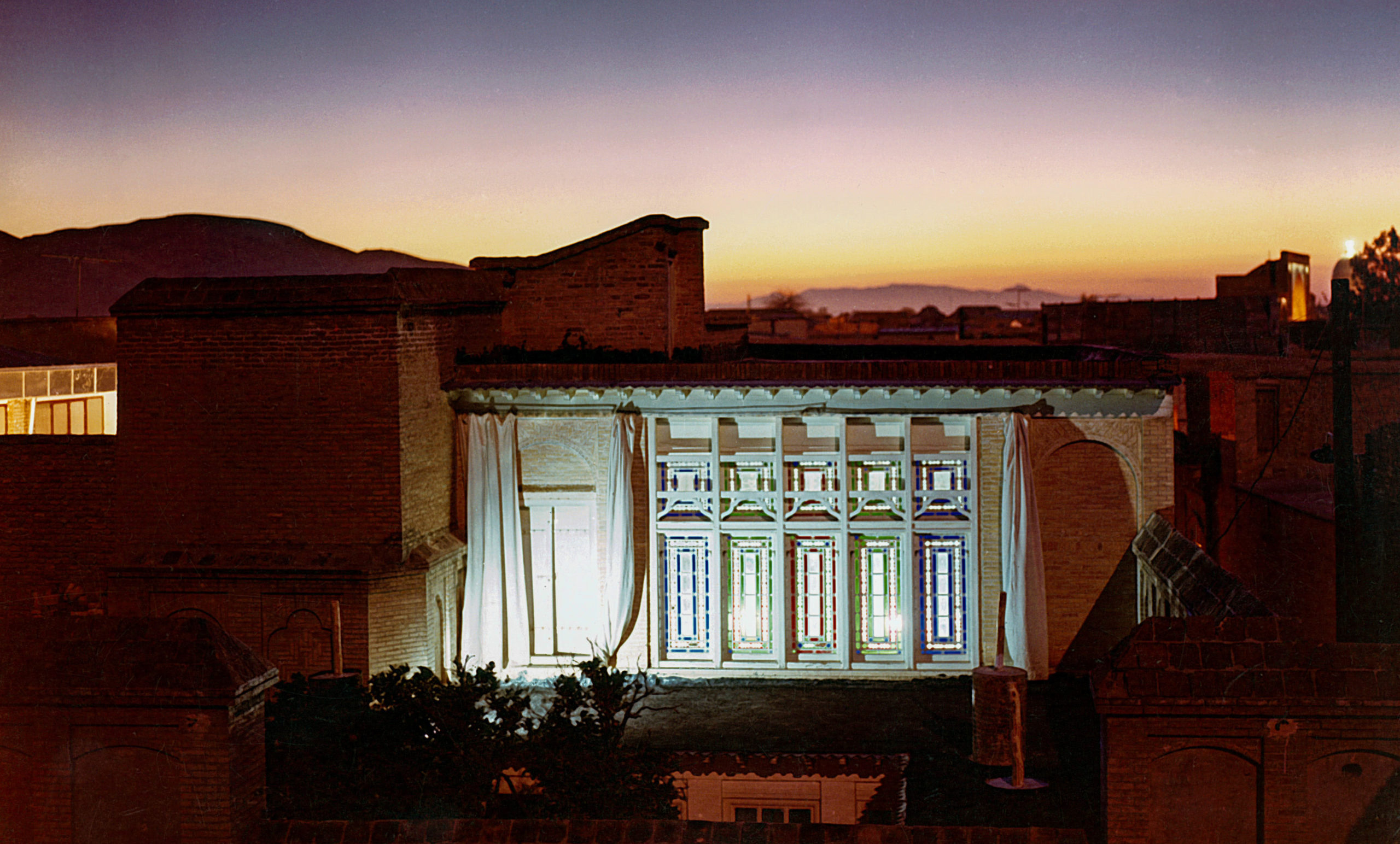
Nineteenth-century Persia, once the cradle of a great civilization, was steeped in ignorance and corruption, the lives of its masses marked by disillusionment and hopelessness. Nor was the world at large faring much better, subject to the blights of war, imperialism, and slavery, and suffering the oppression of prejudice, growing materialism, and loss of faith. Into this darkness came the blazing figure of the Báb, shedding light upon the world and guiding a lost humanity in a new direction. Eulogizing the night on which the Báb was born, Bahá’u’lláh writes:
Blessed art thou, O night! For through thee was born the Day of God, a Day which We have ordained to be the lamp of salvation unto the denizens of the cities of names, the chalice of victory unto the champions of the arenas of eternity, and the dawning-place of joy and exultation unto all creation.3Days of Remembranc, no. 40, paragraph 2.
Human and Divine Stations
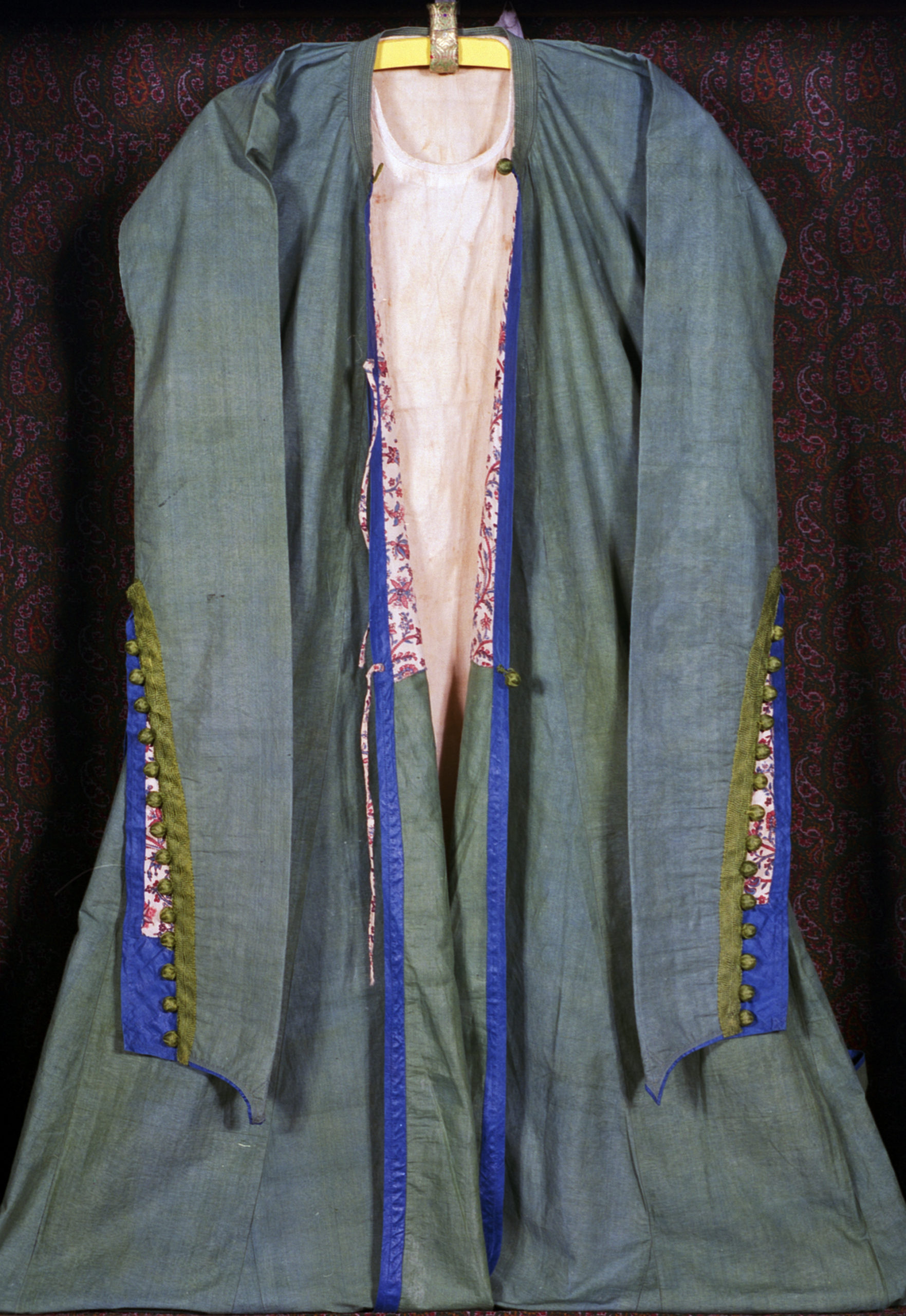
The Manifestations of God have two stations. The first is Their human station, the station of individual characteristics and temporal limitations; they love, suffer, and die, as do all human beings. The second is their divine station, one in which they manifest the majesty and power of God, in which their voice is the voice of God Himself. The Báb, while sharing this dual station with all the Prophets of the past, was unique in having a twofold mission, as the Bearer of a wholly independent Revelation and the Herald of One still greater than His own.
4God Passes By, page 27. His life and Writings are thus marked by a unique richness arising out of this twofold mission, which, in the words of Shoghi Effendi, constitutes the most distinctive feature of the Bahá’í Dispensation
5World Order of Bahá’u’lláh, page 123. –the appearance of two Manifestations of God in close succession.
The complementary nature of the human and the divine stations is clearly visible in the person of the Báb. He was a merchant by profession; He did not belong to any of the ecclesiastical orders of His time and had not acquired the learning current among them. His only schooling was what He received as a child in a traditional primary school, where children were taught to read the Qur’án and little else.6H.M. Balyuzi, The Báb: The Herald of the Day of Days, pages 33–40. Yet, in the course of six short years, from the time He announced His mission in 1844 until His martyrdom in 1850, voluminous writings, revealed with unimaginable rapidity, flowed from His pen. He states that He revealed no less than a thousand verses within the space of five hours,
limited only by the capacity of His amanuensis to set down His words. 7Selections from the Writings of the Báb, page 82. The power of His Writings, coupled with the meagerness of His schooling, is, as He Himself attests, proof of His innate knowledge and divine mission:
God beareth Me witness, I was not a man of learning, for I was trained as a merchant. In the year sixty81260 A.H. (1844 A.D.). God graciously infused my soul with the conclusive evidences and weighty knowledge which characterize Him Who is the Testimony of God—may peace be upon Him—until finally in that year I proclaimed God’s hidden Cause and unveiled its well-guarded Pillar, in such wise that no one could refute it.9See Selections from the Writings of the Báb, page 12.
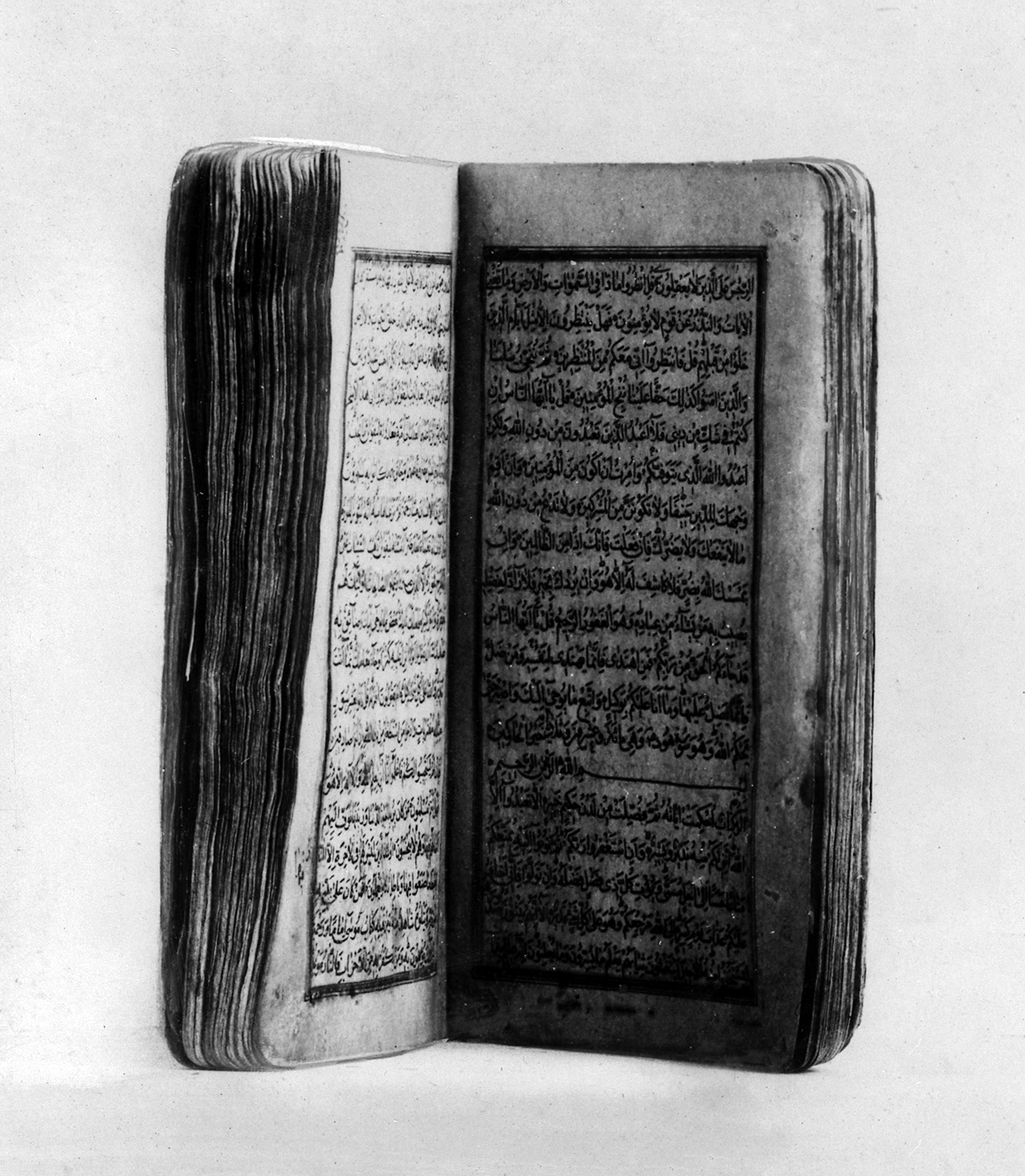
The Revealer of these words, the gentle, the youthful and irresistible person of the Báb
was matchless in His meekness, imperturbable in His serenity, magnetic in His utterance.
10God Passes By, page xiv. He exemplified honesty and fair-mindedness in His business dealings and was gracious and generous towards His family and associates. His tenderness and consideration for His mother and His wife are poignant. A letter He wrote to His wife, Khadíjih Bagum, reflects His deep affection for her:
My sweet love, may God preserve thee. God is my witness that since the time of separation sorrow has been so intense that it cannot be described.11H.M. Balyuzi, Khadíjih Bagum: The Wife of the Báb (Oxford: George Ronald, 1981), page 36.
At the same time, He addressed the people of the world and the rulers of His day with power and authority. Summoned to an examination of His claim before the assembled dignitaries of the land, the Báb, having seated Himself in the place of honor that had been reserved for the heir to the throne, gave His celebrated answer
to the question put to Him by that assembly, Whom do you claim to be?
:12The Dawn-Breakers, page 315.
I am, I am, I am the Promised One! I am the One Whose name you have for a thousand years invoked, at Whose mention you have risen, Whose advent you have longed to witness, and the hour of Whose Revelation you have prayed God to hasten. Verily, I say, it is incumbent upon the peoples of both the East and the West to obey My word, and to pledge allegiance to My person.13God Passes By, page 21.
He fearlessly proclaimed His mission in countless Tablets revealed by His pen, among them these words with which He addressed Muḥammad Sháh, the reigning monarch of Persia, from His prison cell in the fortress of Máh-kú:
I am the Primal Point from which have been generated all created things. I am the Countenance of God Whose splendour can never be obscured, the Light of God Whose radiance can never fade. Whoso recognizeth Me, assurance and all good are in store for him .…14Selections from the Writings of the Báb, page 12.
The Writings of the Báb
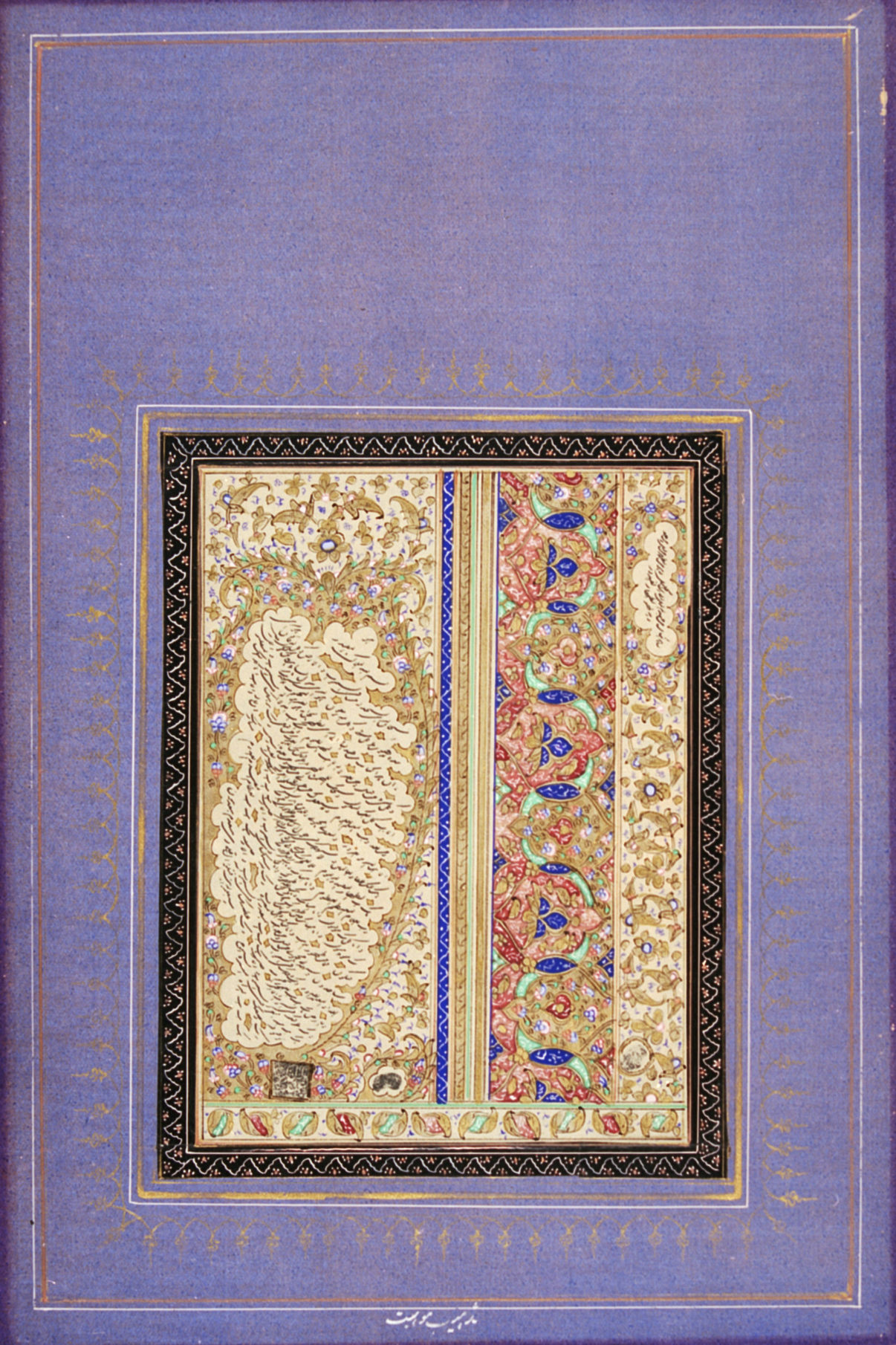
The Báb affirms that the verses revealed by a Manifestation of God are the greatest proof of His mission. His own vast Writings, comprising over two thousand Tablets, epistles, prayers, and philosophical treatises,15Selections from the Writings of the Báb (Wilmette: Bahá’í Publishing Trust, 2006), pages 96–97. were conclusive and sufficient testimony of His truth for thousands who came into contact with them. While His Writings are complex, unconventional, and at times esoteric, they are also possessed of a power that penetrates the hearts. They restructured the thoughts of their readers, so that they could break free from the chains of obsolete beliefs and inherited customs.
There is remarkable order and method in the Writings of the Báb. He Himself classified them in terms of five modes of revelation: divine verses, prayers, commentaries, rational discourse—written in Arabic—and the Persian mode, which in turn contains each of the other four. Within them, there is a complex but coherent system of symbols (including the symbolism of letters and numbers), extensive quotations from and allusions to the Qur’án and Islamic traditions, and references to concepts from Shaykhí 16The Shaykhí school, founded by Shaykh Ahmad-i-Ahsa’i, emerged in 19th century Iran as a movement within Shi’ah Islam. discourse. The Báb’s works are, moreover, linguistically innovative, distinguished by departures from grammatical conventions and neologisms.17See Nader Saiedi, Gate of the Heart (Waterloo: Wilfrid Laurier, 2008), page 26. They attempt, as one writer puts it, to mine words for more than the meaning which is bound to them by usage and etymology.
18Todd Lawson, The Dangers of Reading: Inlibration, Communion and Transference in the Qur’án Commentary of the Báb, in Scripture and Revelation, edited by Moojan Momen (Oxford: George Ronald, 1997), page 197 The complexity of the ideas and their philosophical and mystical depth, together with the uniqueness of their language, make the Báb’s texts difficult to understand but also account for their richness, beauty, and fascination.
The Writings of the Báb range from brief personal letters written to members of His family to the Kitáb-i-Asmá’, a book of more than three thousand pages, in which He discusses the names and attributes of God and how all of reality can be spiritualized through the recognition of the Source of divine revelation.19Nader Saiedi, Gate of the Heart, page 36. His works seek to reconcile the life of the individual soul to the process of history, by asserting the potential and ultimate meaningfulness of all created things, from the highest to the lowest.
20Todd Lawson, The Dangers of Reading, page 198.
In the first, greatest and mightiest
21God Passes By, page 6. of His books, the Qayyúmu’l-Asmá’, a commentary on the Súrih of Joseph, the Báb goes beyond merely commenting on the Súrih of the Qur’án, but finds in the figure of Joseph the archetype of His—and eventually Bahá’u’lláh’s—suffering and ultimate triumph. The story of Joseph thus becomes a link binding the Dispensations of the Manifestations of God throughout history. Similarly, the Persian Bayán, the Mother-Book of the Bábí Dispensation,
22God Passes By, page 324. is not only the repository of the laws ordained by the Báb, but also the link between the Faith of the Báb and that of Bahá’u’lláh.
The Purpose of Laws
The laws of the Báb are a distinctive feature of His Dispensation. They were designed to abolish at a stroke the privileges and ceremonials, the ordinances and institutions
of the past, and to bridge the gap between an obsolete system and the institutions of a world-encompassing Order destined to supersede it.
23God Passes By, p 59. The laws in the Báb’s early works were closely linked to the laws of Islam. They constituted at times a restatement and at times a restriction on some Islamic laws, thus beginning the process of gradually refashioning them. With the independence of the new Faith established, the laws revealed in His later works, particularly the Persian Bayán, had a different aim.24See Muḥammad Afnán & William S. Hatcher, Western Islamic Scholarship and Bahá’í Origins, Religion 15:1 (1985), 29-51. They were presented as a more definite break from the past, but their ultimate purpose was to pave the way for the future: the Báb was preparing His followers for the Revelation of Bahá’u’lláh.
Thus, the fundamental purpose of the Bayan is twofold. The first is to explain that the recognition of God and of the shared truth of divine religions can be achieved only through the recognition of His Messenger in every age and by adherence to His laws and ordinances: True knowledge, therefore, is the knowledge of God, and this is none other than the recognition of His Manifestation in each Dispensation.
25Selections from the Writings of the Báb, page 89. The second purpose is to herald the coming of Bahá’u’lláh, the Promised One designated by the Báb as Him Whom God shall make manifest, about whom He writes: The Bayán is, from beginning to end, the repository of all of His attributes, and the treasury of both His fire and His light.
26Selections from the Writings of the Báb, page 101. The laws of the Bayán are formulated to promote and clarify this twofold purpose. For example, the law enjoining the believers to repeat ninety-five times each day the name of God, the All-Glorious (Alláh’u’Abhá)—a law later confirmed by Bahá’u’lláh—was meant to enable the one reciting it to attain to divine guidance so that he would recognize the Promised One when He appeared.
The Báb made the implementation of His laws subject to the sanction of Him Whom God shall make manifest, while at the same time making it clear that His advent was near at hand. In other words, the laws of the Báb created a bridge between the religious dispensations of the past and that of Bahá’u’lláh. Among the laws of the Bahá’í Faith that are based on the teachings of the Báb are those of pilgrimage, marriage, burial, and inheritance, the law of Huqúqu’lláh, and the Badí‘ calendar.27A calendar consisting of nineteen months of nineteen days each, the years organized into cycles of nineteen years and periods of 361 years.
A calendar brought by a Manifestation of God is more than a practical tool; it gives meaning to the passage of time and the movement of history. In its letter announcing the common implementation of the Badí‘ calendar throughout the Bahá’í world, the Universal House of Justice writes:
The adoption of a new calendar in each dispensation is a symbol of the power of Divine Revelation to reshape human perception of material, social, and spiritual reality. Through it, sacred moments are distinguished, humanity’s place in time and space reimagined, and the rhythm of life recast.28Letter dated 10 July 2014 to the Bahá’ís of the World.
The implementation of the calendar initiated by the Bab marks, therefore, a historic step in … the unfoldment of Bahá’u’lláh’s World Order,
29Letter dated 10 July 2014 to the Bahá’ís of the World. that same Order which the Báb extolled in the Bayán when He wrote, Well is it with him who fixeth his gaze upon the Order of Bahá’u’lláh and rendereth thanks unto his Lord!
30The World Order of Bahá’u’lláh: Selected Letters (Wilmette: Bahá’í Publishing Trust, 1991, 2009 printing), p. 147.
Striving for Perfection
The Báb exhorted His followers to display the highest degree of purity and refinement, both outwardly and inwardly, so that they would be worthy of receiving Him Whom God shall make manifest when He appeared. The promotion of excellence is a salient and recurring theme in His Writings. In the Persian Bayán, He defines the most perfect state of each thing as its paradise and writes:
He hath ordained for each thing that they who possess power over it should raise it to its highest station of perfection, so that it may not be deprived of its own Paradise.31Authorized translation of an excerpt from the Persian Bayán.
Although the Báb was condemned to a life of exile and imprisonment, yet, in the midst of His sufferings, His life was characterized by the highest degree of refinement and virtue and by His love of beauty32For more on this theme, see Moojan Momen, Perfection and Refinement: Towards an Aesthetics of the Báb, in Lights of ‘Irfán: Studies in the Principal Bahá’í Beliefs, Book Twelve (Darmstadt: ‘Asr-i-Jadíd Publisher, 2010), pages 221–243., which is evident in His exquisite handwriting. One example of His calligraphy is a beautiful scroll on which were inscribed, in the form of a pentacle, no less than three hundred and sixty derivatives of the word Bahá.33God Passes By, page 69.
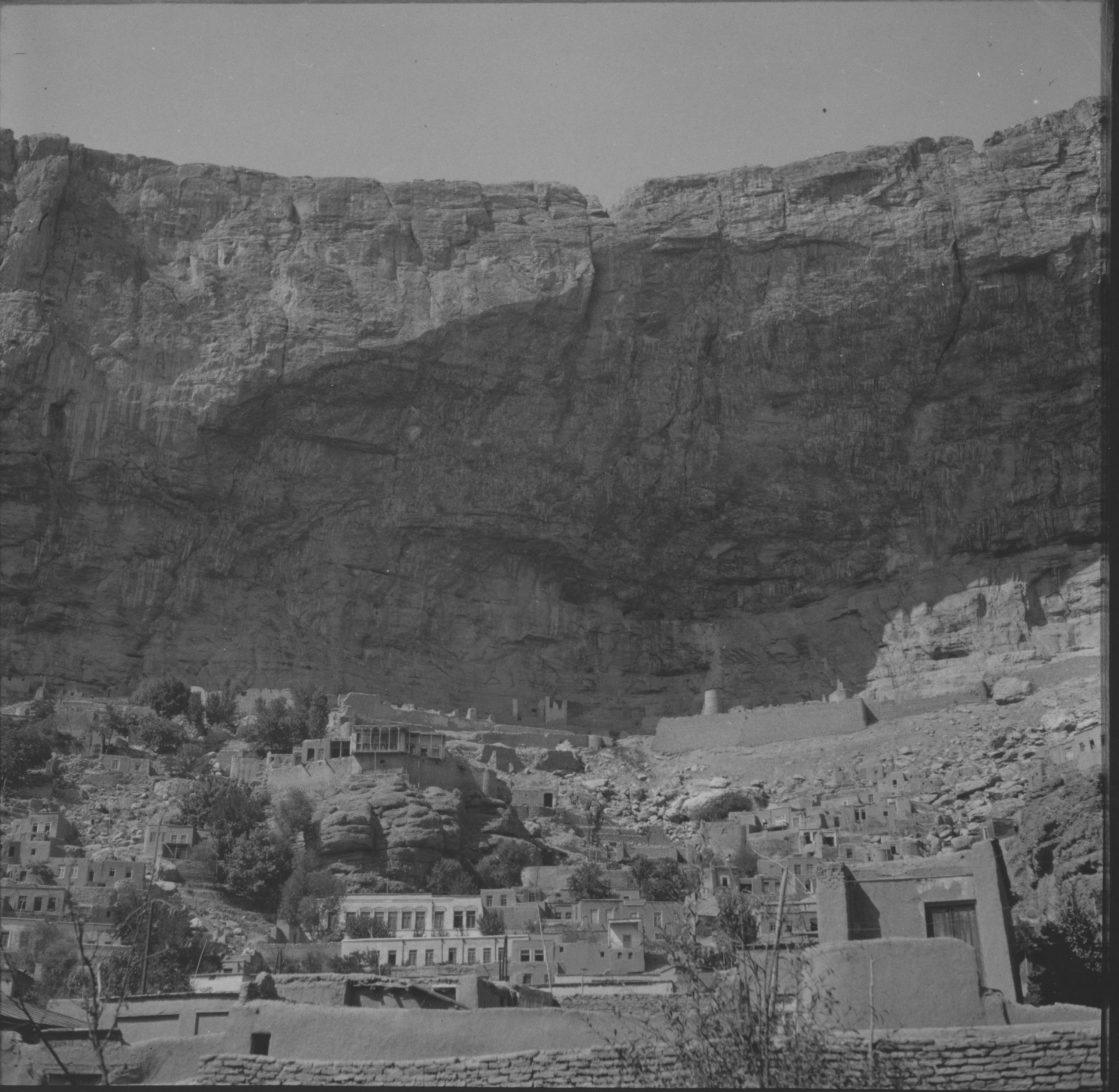
The prison of Máh-kú, the first of two prison fortresses where He spent His last years, was a dungeon on a mountain top,
so remote, so inhospitable and dangerously situated a corner of the territory of the Sháh,
34The Dawn-Breakers, page 245. in which His companions were two men and four dogs.
35Ibid, page 248. In His presence there [was] not at night even a lighted lamp!
36Selections from the Writings of the Báb, page 87. And yet, in such a place, the Báb’s qualities of rare nobility and beauty, His gentle yet forceful personality, and His natural charm, combined with infinite tact and judgment, won over almost all with whom He was brought into personal contact, often converting His gaolers to His Faith and turning the ill-disposed into admiring friends.
37The Dawn-Breakers, Introduction, page xxxiii.
The life and character of the Báb until the last moments of His life reflected the perfect Light of Which He was the personification. ‘Abdu’l-Bahá has said of the Báb:
This illustrious Being arose with such power as to shake the foundations of the religious laws, customs, manners, morals, and habits of Persia, and instituted a new law, faith, and religion. Though the eminent men of the State, the majority of the people, and the leaders of religion arose one and all to destroy and annihilate Him, He single-handedly withstood them and set all of Persia in motion. How numerous the divines, the leaders, and the inhabitants of that land who with perfect joy and gladness offered up their lives in His path and hastened to the field of martyrdom! The government, the nation, the clergy, and prominent leaders sought to extinguish His light, but to no avail. At last His moon rose, His star shone forth, His foundation was secured, and His horizon was flooded with light. He trained a large multitude through divine education and exerted a marvellous influence upon the thoughts, customs, morals, and manners of the Persians.38Some Answered Questions, Part 1: On the Influence of the Prophets in the Evolution of Humanity: 8. The Báb.
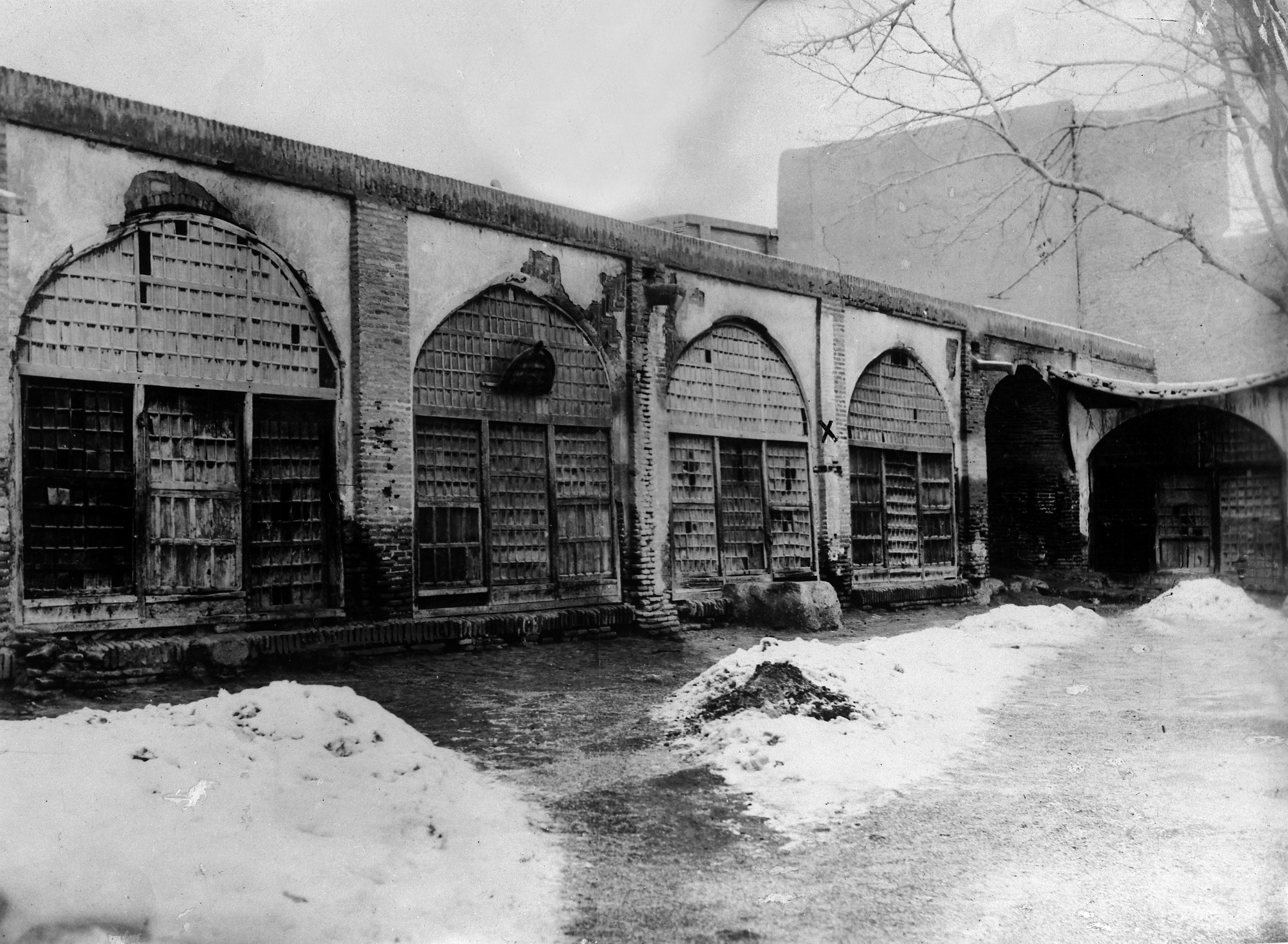
Him Whom God shall make manifest
Through His unique combination of kindness, heroism, and majesty, the Báb inspired the selfless allegiance and wholehearted devotion of thousands of followers. Owing to His influence, these men and women not only broke with centuries-old traditions but also laid down their lives to help usher in the new age the Báb had come to inaugurate. Yet, the Object of this matchless adoration directed His own devotion and allegiance towards Bahá’u’lláh, Whose advent He had come to herald. In the Qayyúmu’l-Asmá, the Báb addresses Bahá’u’lláh in these words:
O Thou Remnant of God! I have sacrificed myself wholly for Thee; I have accepted curses for Thy sake, and have yearned for naught but martyrdom in the path of Thy love. Sufficient witness unto me is God, the Exalted, the Protector, the Ancient of Days.39Selections from the Writings of the Báb, page 59.
The expression of Bahá’u’lláh’s praise for the Báb is equally moving. In the Kitáb-i-Íqán, writing about His own tribulations and sufferings, Bahá’u’lláh proclaims:
Amidst them all, We stand, life in hand, wholly resigned to His will; that perchance, through God’s loving-kindness and His grace, this revealed and manifest Letter40Bahá’u’lláh. may lay down His life as a sacrifice in the path of the Primal Point, 41The Báb. the most exalted Word.42The Kitáb-i-Íqán: The Book of Certitude (Wilmette: Bahá’í Publishing Trust, 2003, 2008 printing), page 252.
In the Revelation of the Báb—marked by a profound recasting of the purpose of religion, by devotion to perfection and excellence, and by utter self-sacrifice—one finds the seed, endowed by the Hand of Omnipotence with such vast potentialities
that was destined to germinate in the form of the still more compelling Revelation
43God Passes By, page 54. of Bahá’u’lláh. The Twin Holy Days marking the birth of the Báb and the birth of Bahá’u’lláh, falling on successive days according to the lunar calendar and accounted as one in the sight of God,
are fitting occasions to reflect on the distinctive characteristics of the life and teachings of the Báb and on their relationship to the message of Bahá’u’lláh.
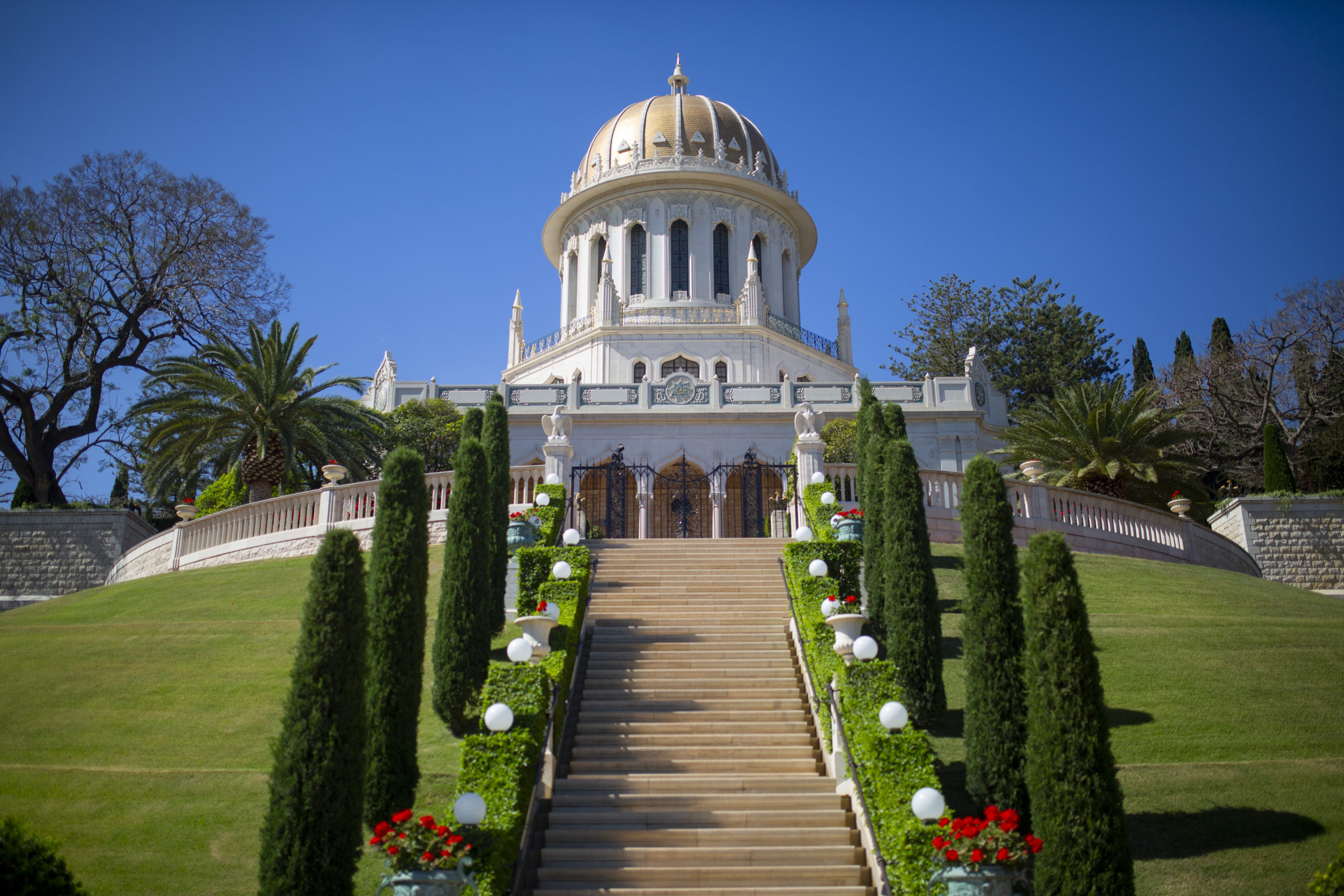
Accounts of the meteoric rise, captivating claims, and mysterious public execution of the Báb—born 200 years ago in Shíráz, Iran—not only made a profound impression on the land of His birth, but also much further afield. From the distant reading rooms of Indian and English seats of learning to the salons of Paris’s Left Bank, writers and artists were enthralled by the tragedy of the Báb’s life and the appalling treatment meted out to His followers by the fanatical authorities of the time. This concise survey explores how this particular episode in humanity’s religious history resonated so strongly through the decades that followed.
Observers of the Bábí movement
During the nineteenth century, exotic stories and images from the Orient exerted a peculiar fascination on European minds. There were those, such as the British statesman Lord Curzon, who were impelled to make the journey east, motivated by imperialist ambitions. Others, however, including the decidedly anti-imperialist Edward Granville Browne of Cambridge University, genuinely identified with the cultures they discovered and returned with a new understanding of the potentialities of the peoples they encountered. One writer has maintained that the political theme of Europe regenerating a lifeless Asia had its literary and artistic counterpoint in the thought that the less sophisticated world overseas might be able to rejuvenate a greying Europe.
1Philip Darby, Three Faces of Imperialism, Britain and American Approaches to Asia and Africa 1870–1970 (New Haven: Yale University Press, 1987), p. 51.
The Comte de Gobineau’s Religions et Philosophies dans l’Asie Centrale (1865)—with its obvious parallels drawn between the life and martyrdom of the Báb with that of Jesus Christ—was the most influential volume in carrying the story to Western minds. The English poet and cultural critic Matthew Arnold, in A Persian Passion Play, wrote that the chief purpose
of Gobineau’s book was to give a history of the career of Mirza Ali Mahommed…the founder of Bâbism, of which most people in England have at least heard the name.
2Matthew Arnold, A Persian Passion Play, Essays in Criticism (London: Macmillan, 1884), p. 668. The notion that most people in England,
in Arnold’s view, were aware of the Báb indicates how deeply His fame had penetrated into far-off societies.
An encounter with Gobineau’s text also launched Browne on his quest. His only visit to Iran in 1887–88, recounted in A Year Amongst the Persians (1893), lit a fire which…would prove inextinguishable.
3A. J. Arberry, Oriental Essays, Portraits of Seven Scholars (Oxford: Oxford University Press, 1960), p. 171. The memoir of his sojourn did much to familiarize English readers with the Báb, His gentleness and patience, the cruel fate which had overtaken him, and the unflinching courage wherewith he and his followers, from the greatest to the least, had endured the merciless torments inflicted upon them by their enemies.
4Edward Granville Browne, A Year Amongst the Persians (London: A. C. Black, 1950), p. 330.
A. L. M. Nicolas, a French scholar born in Iran, was also intrigued by Gobineau’s work. Nicolas’s research, encompassing translations of several of the Báb’s major Writings, additionally contributed much to raising awareness of His life and teachings: My reflections on [The Seven Proofs by the Báb] that I had translated, filled me with a kind of intoxication and I became, little by little, profoundly and uniquely a Bábí. The more I immersed myself in these reflections, the more I admired the greatness of the genius of him who, born in Shíráz, had dreamt of uplifting the Muslim world…
5A. L. M. Nicolas, cited in Moojan Momen, The Bábí and Bahá’í Religions 1844–1944: Some Contemporary Western Accounts (Oxford: George Ronald Publisher, 1981), p. 37. Nicolas maintained a lifelong admiration for the Báb, concluding: Poor great Prophet, born in the heart of Persia, without any means of instruction, and who, alone in the world, encircled by enemies, succeeds by the force of his genius in creating a universal and wise religion…. I want people to admire the sublimity of the Báb, who has, moreover, paid with his life, with his blood, for the reforms he preached.
6Ibid., p. 38.
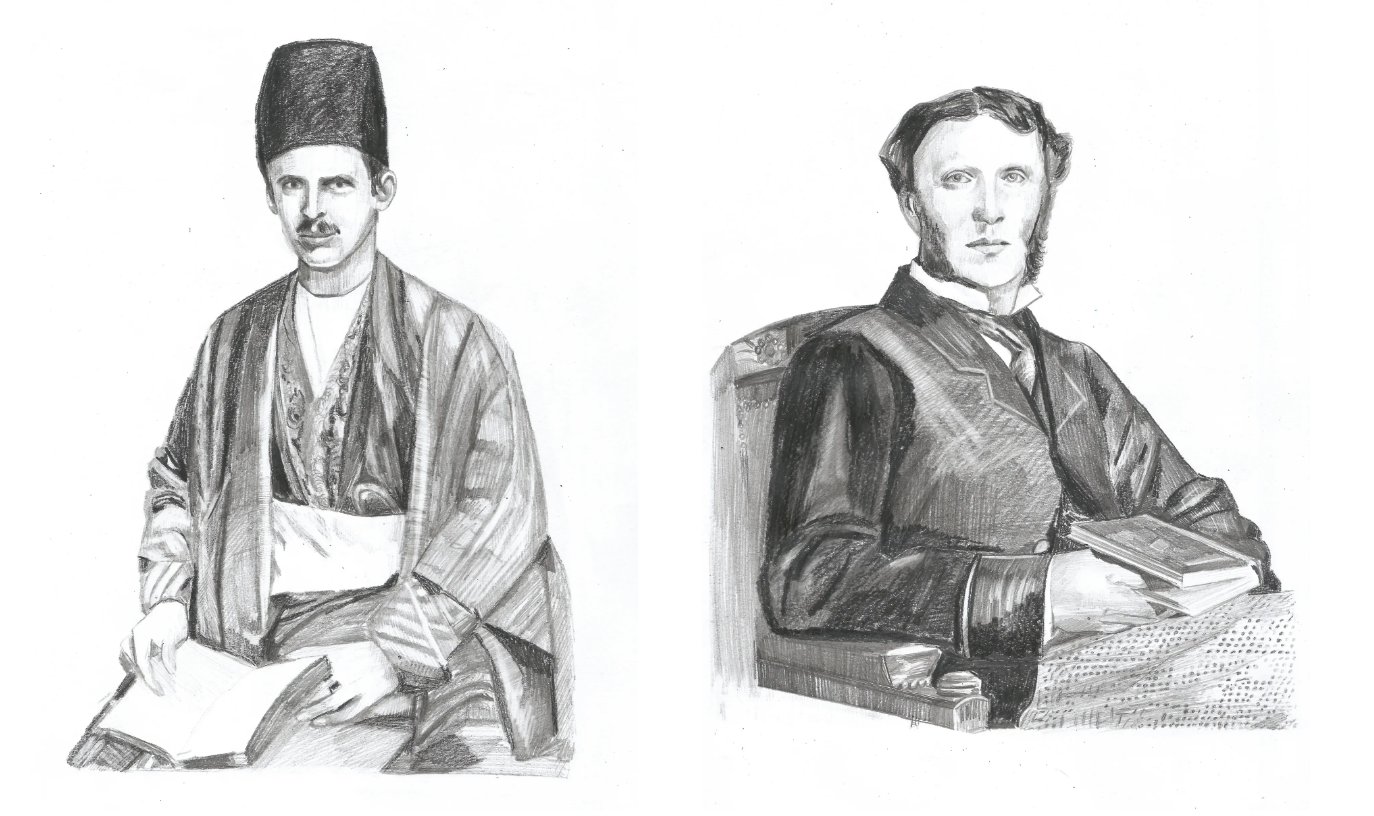
Poetic responses in Iran
The power of the written or spoken word is given great emphasis in the Bábí and Bahá’í scriptures. The Báb Himself cited a tradition, Treasures lie hidden beneath the throne of God; the key to those treasures is the tongue of poets.
7Nabíl-i-A’ẓam (Muḥammad-i-Zarandí). The Dawn-Breakers: Nabíl’s Narrative of the Early Days of the Bahá’í Revelation (Wilmette, Ill.: Bahá’í Publishing Committee, 1932), pp. 258–59. Among the early followers of the new faith were such distinguished poets as Táhirih, Varqá, Na’ím, and ‘Andalíb.8Baydá’í’s Memoir of the Poets of the First Bahá’í Century contains biographical notes about, and examples of work by, no fewer than 134 Bábí and Bahá’í poets.
Accounts of the Bábís generated an almost immediate response from writers in Iran itself. Mírzá Habíb-i-Shírází, known as Qá’iní, one of the country’s most eminent poets, was reportedly the first to extol the Báb in his work.9Nabíl-i-A’ẓam, The Dawn-Breakers, p. 258. Footnote 1. The news of more than 300 Bábís under siege at the Shrine of Shaykh Tabársí who, despite their lack of military expertise, held off the forces of the Sháh’s army for almost a year—notably aided by an exceptionally devastating display of swordsmanship by the Báb’s first follower Mullá Ḥusayn, who was but a religious scholar—evoked the enthusiasm of poets who, in different cities of Persia, were moved to celebrate the exploits of the author of so daring an act. Their poems helped to diffuse the knowledge, and to immortalize the memory, of that mighty deed.
10Nabíl-i-A’ẓam, The Dawn-Breakers, p. 333. In the West, reports of the beleaguered Bábís were extensively covered by the press11In an ongoing study, Jan Teofil Jasion has recorded 1380 articles for the years between 1845 and 1859. By the end of December 1845, more than 50 articles had been published in newspapers throughout Britain, France and the United States of America. By 1857, newspaper reports were printed in practically every capital city in Western Europe and as far afield as Java, Puerto Rico, the Bahamas, Hawaii and Canada., as well as described in travelogues by Robert Binning, Lady Sheil, and Jane Dieufloy.
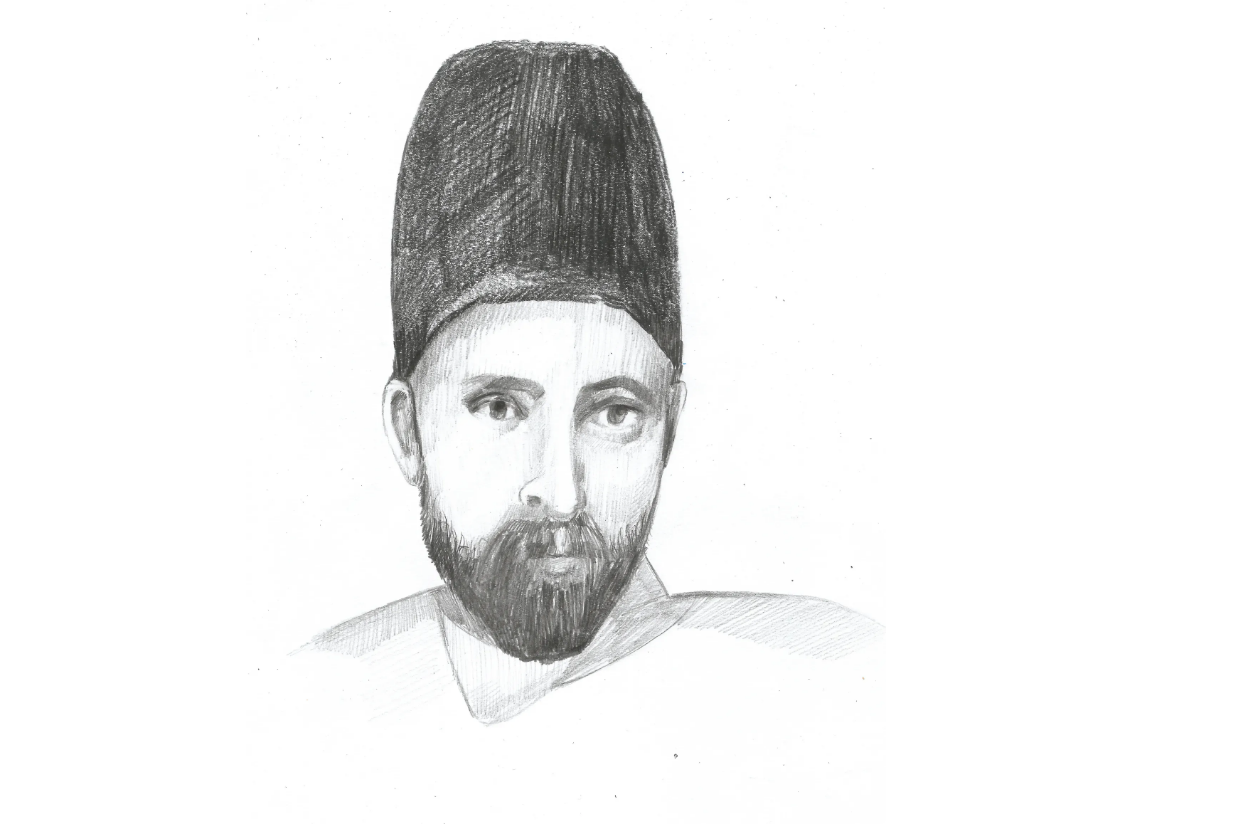
Táhirih, Qurratu’l-‘Ayn
The poet known as Táhirih, or Qurratu’l-‘Ayn, the first woman to follow the Báb, was rare among her gender at that time for her education and erudition. This ghazal, known as her signature piece, conveys her yearning devotion to the Beloved:
I would explain all my grief
Dot by dot, point by point
If heart to heart we talk
And face to face we meet.
To catch a glimpse of thee
I am wandering like a breeze
From house to house, door to door
Place to place, street to street.
In separation from thee
The blood of my heart gushes out of my eyes
In torrent after torrent, river after river
Wave after wave, stream after stream.
This afflicted heart of mine
Has woven your love
To the stuff of life
Strand by strand, thread to thread.12Táhirih, cited in Farzaneh Milani, Veils and Words: The Emerging Voices of Iranian Women Writers (London: I. B. Tauris, 1992).
More than any other element of the Bábí experience, it was the resolve and courage of Táhirih that seems to have excited the imagination of writers. Numerous volumes have been written about her—notably recalling her singular act of publicly removing her veil—not only in Persian, Arabic, and English but extensively in Urdu. Around 1870, after Bábís travelled to Mumbai, Táhirih’s story and poetry came to be well-known in the Indian sub-continent. The influential Punjabi-born poet, politician and philosopher Allama Muhammad Iqbal listed Táhirih among those whose songs bestow constancy to the souls because their songs derive their heat from the universe of inner-heat.
13Sabir Afaqi, Qurratu’l-’Ayn Táhirih in Urdu Literature, in Táhirih in History: Perspectives on Qurratu’l-Ayn from East and West, ed. Sabir Afaqi and Jan Teofil Jasion (Los Angeles: Kalimát Press), 2004, p. 31. In his Javid Nama (1932), Iqbal lists Táhirih as one of three martyr-guides.
Think you not Táhirih has left this world.
Rather she is present in the very conscience of her age.14Muhammad Iqbal, cited in Ibid., p. 31.
In Europe, as early as 1874, an Austrian novelist and women’s rights activist Marie von Najmajer, had written an epic poem, Gurret-ül-Eyn, believed to be the first composed in a Western language in honor of the new religion. Four years later, William Michael Rossetti mentioned both the Báb and Táhirih in a lecture given in various cities about the English poet Shelley.15William Michael Rossetti, in The Dublin University Magazine, (February/March 1878). Rossetti observed that Táhirih had an almost magical influence over large masses of the population,
16Ibid. and that the protagonists of Shelley’s poem, The Revolt of Islam, anticipate both her life and that of the Báb. In this work, Shelley seems to have captured the spirit of expectation of that time, foreseeing the imminent advent of two Divine beings:
And a voice said:
Thou must a listener be17Percy Bysshe Shelley, The Revolt of Islam (London: C. and J. Oliver, 1818), Canto I: LVIII.
This day—two mighty Spirits now return,
Like birds of calm, from the world’s raging sea,
They pour fresh light from Hope’s immortal urn;
A tale of human power—despair not—list and learn!
Explaining the significance of a verse from Háfiz, the Báb had said, It is the immediate influence of the Holy Spirit that causes words such as these to stream from the tongue of poets the significance of which they themselves are often times unable to apprehend.
18Nabíl-i-A’ẓam, p. 259. In similar vein, Shelley had not long before declared that poets are the hierophants of an unapprehended inspiration, the mirrors of the gigantic shadows which futurity casts upon the present, the words which express what they understand not; the trumpets which sing to battle and feel not what they inspire….
19Percy Bysshe Shelley, cited in Shelley’s Poetry and Prose, ed. Donald Reiman and Sharon Powers (New York: W. W. Norton, 1977). The creative forces that accompany the pronouncements of a Manifestation of God—or even anticipate them—thus appear to prompt the spiritual sensibilities of receptive souls.
Throughout the twentieth century, Táhirih’s fame spread further abroad. The journalist and outstanding Bahá’í teacher Martha Root, who penned a monograph about her, noted that, As I have travelled in the five continents, I have seen how her life has influenced women, and men too, throughout the world.
20Martha Root, Táhirih the Pure (Los Angeles: Kalímat Press, 1981), p. 43. A 1960 public sculpture in Baku, Azerbaijan, by Fuad Abdurrahmanov, depicting a woman casting aside her veil, is said to have been inspired by Táhirih.21See https://news.bahai.org/story/1150/ And, as recently as in 2017, Azerbaijan’s National Museum of History held a celebration recognizing Táhirih’s dedication and contribution to the advancement of women. Táhirih is held in high regard,
explained Professor Azer Jafarov of Baku State University. She influenced modern literature, raised the call for the emancipation of women, and had a deep impact on public consciousness.22Ibid.
Around the same time that Táhirih made her appearance unveiled at the Conference of Badasht in June–July 1848, the first women’s rights convention in the United States was being held at Seneca Falls, at which was launched the women’s suffrage movement in America. In the estimation of Western women, the acts of Táhirih were interpreted through the lens of their campaign for the right to vote. In Britain in 1911, the Women’s Freedom League newspaper ran a three-part article by campaigner Charlotte Despard titled, A Woman Apostle in Persia.
23Despard, Charlotte, A Woman Apostle in Persia, The Vote, Vol. IV No.101. 30 September 1911: pp.280-1. When an English Bahá’í, Mary Blomfield, petitioned King George V in person to ease the maltreatment of imprisoned suffragettes, an American Bahá’í dubbed her the Western Qurratu’l-Ayn.
24Letter from Joseph Hannen to Lady Blomfield, 7 September 1914. United States Bahá’í Archives.
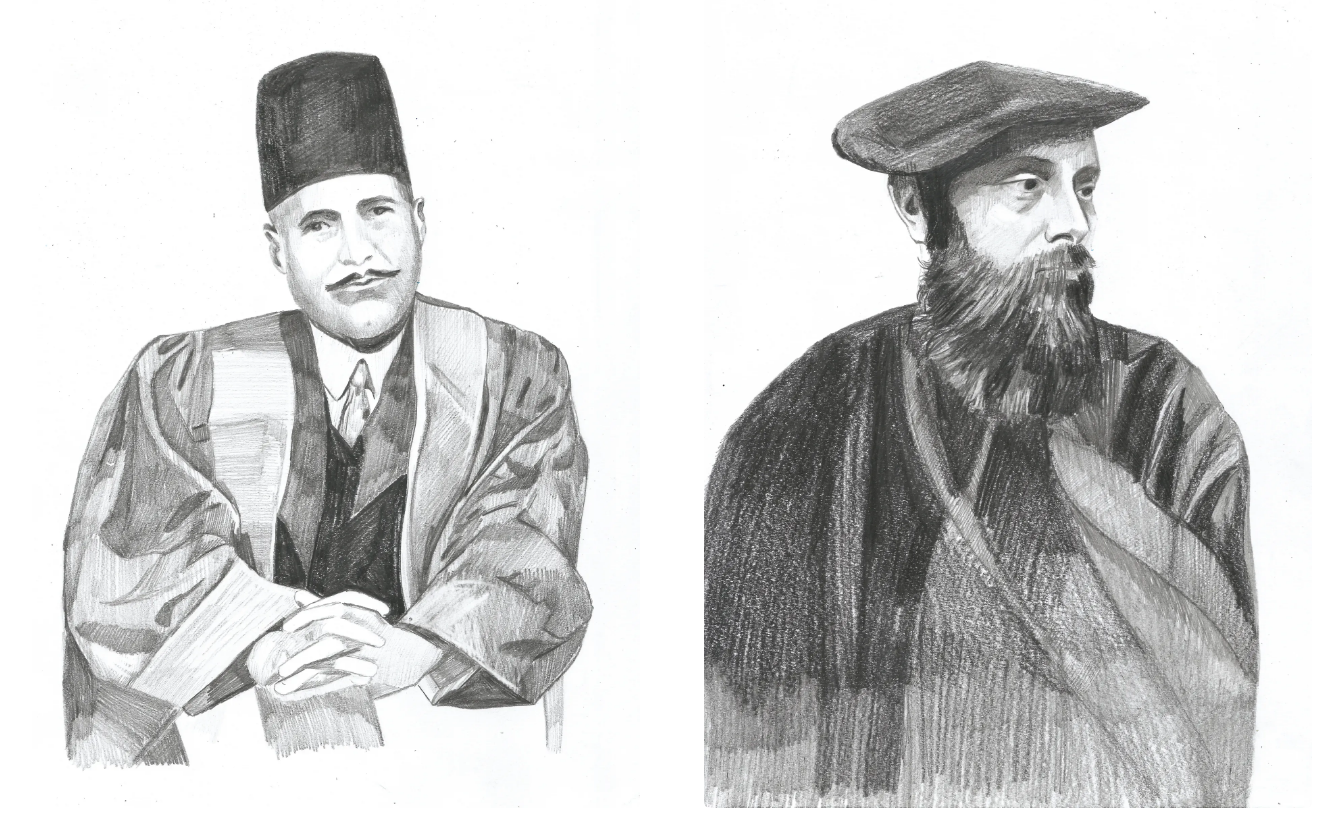
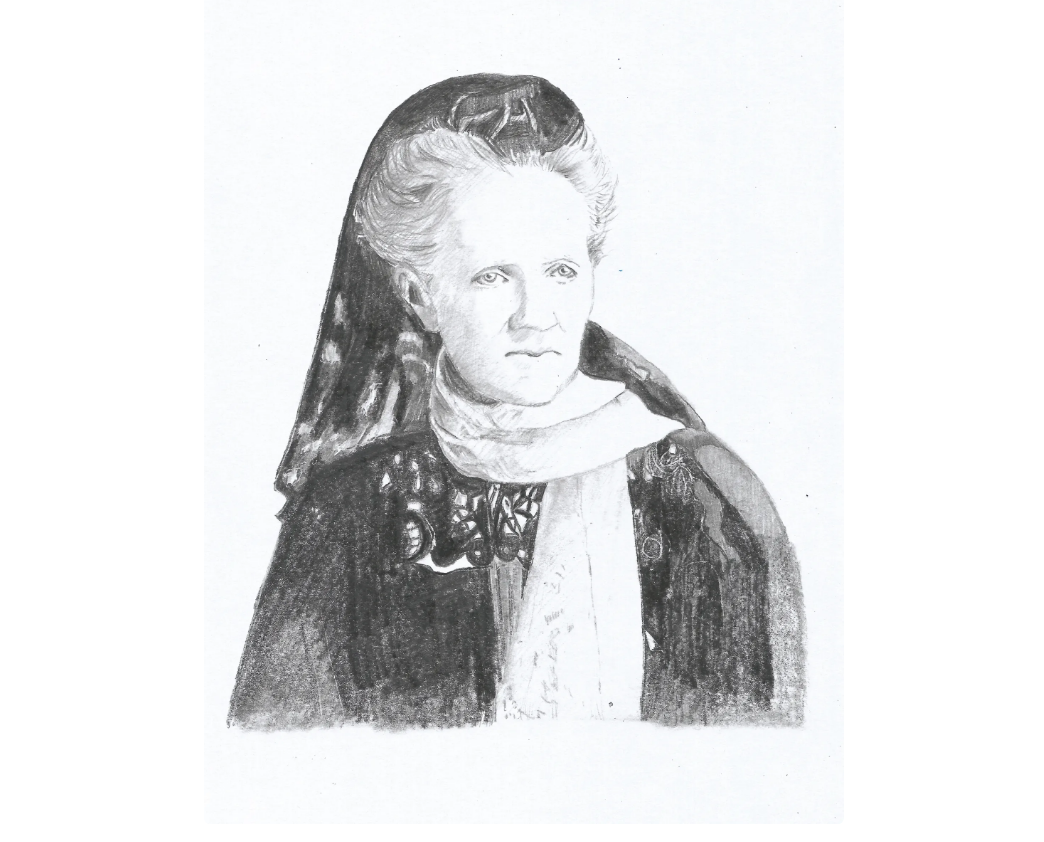
The salons of Paris
The first European novel that was set against the episode of the Báb was published in France 1891. In Un Amour au Pays de Mages, A. de Saint-Quentin—a French consular official and colleague of Gobineau’s—created a love story between a humble dervish and the daughter of a cleric in Qazvín played out amid the events of Bábí history.
Writer Jules Bois had also been so moved by the story of events in faraway Iran that, during a journey through the Holy Land, he had stopped at Mount Carmel to place flowers on the tomb of the Báb.
25Jan Teofil Jasion, ‘Abdu’l-Bahá in France 1911 & 1913 (Paris: Éditions bahá’íes France, 2016), p. 189.
Writing in 1925, Bois recalled that, All Europe was stirred to pity and indignation over the martyrdom of the Báb, July 9 1850 … among the littérateurs of my generation, in the Paris of 1890 the martyrdom of the Báb was still as fresh a topic as had been the first news of his death. We wrote poems about him. Sarah Bernhardt entreated Catulle Mendès for a play on the theme of this historic tragedy …. I was asked to write a drama entitled Her Highness the Pure, dealing with the story of another illustrious martyr of the same cause—a woman, Quarratul-Ayn [sic] the Persian Joan of Arc and the leader of emancipation for women of the Orient.
26Jules Bois, cited in ibid.
Neither of the proposed plays of Mendès or Bois materialized. However, Bois did meet ‘Abdu’l-Bahá in Paris on 11 November 1911, at the home of composer Hermann Bemberg, where they performed extracts from an opera they had co-written with Eustache de Lorey, titled Leïlah. Set in Shíráz, the opera contained many references to mystical Persia. It was staged in Monaco three years later.27Jan Teofil Jasion, ‘Abdu’l-Bahá in France 1911 & 1913.
In 1910, the Paris-based American heiress Laura Clifford Barney—who would be active in the International Council of Women in the following decades and its representative to the League of Nations—had published her own, never performed, drama, God’s Heroes, centering on Táhirih. In its preface, Barney described her play as but a fragment of one of the most dramatic periods in history and … but a limited presentation of the most vast philosophy yet known to man.
The theatre, like all other forces may upbuild or shatter. It can be a mighty instrument for spreading ideas broadcast; and, for this reason, I believe that the wave of regeneration, which is sweeping over the world, should take form also on the stage; and am trying, therefore, in this play, to bring before the public some of the most inspiring events of our epoch.
I have, therefore, presented to the public a few episodes in the early Babi history, and only a few of the noted characters of that period: yet, even this imperfect sketch should suffice to give an idea of the vastness of the movement.28Laura Clifford Barney, God’s Heroes (London: Kegan Paul, Trench, Trübner, 1910), p. v–vi.
Barney thought it preferable
not to portray the Báb or Bahá’u’lláh in any way for certain beings cannot be adequately impersonated.
However there is no such self-restriction in her depiction of Táhirih, who stands forth in history as an example of what the disciple of truth can accomplish despite hampering custom, and violent persecution.
29Ibid., p. viii.
At one moment in the play, Barney gives to Táhirih words that proclaim the advent of a new Revelation:
From all sides I see new life rising; the struggle between the hardened soil and the maturing seed is over. Soon, upon all things, summer will spread victorious beauty!
… even the end has a beginning for spring will again conquer, sister mine. So, when, as now, ancient faiths have become rigid in cold dead forms, a new faith germinates in the souls of men.30Ibid. p. 17.By then a devoted Bahá’í herself, Barney’s intention in presenting this history on stage was made clear to her readers at the outset:
… I hope, notwithstanding, to give you a glimpse of Eastern glory, and to awaken your interest in this great movement, the universal religion—Bahaism, which is today bringing peace and hope to expectant humanity.31Ibid. p. viii.
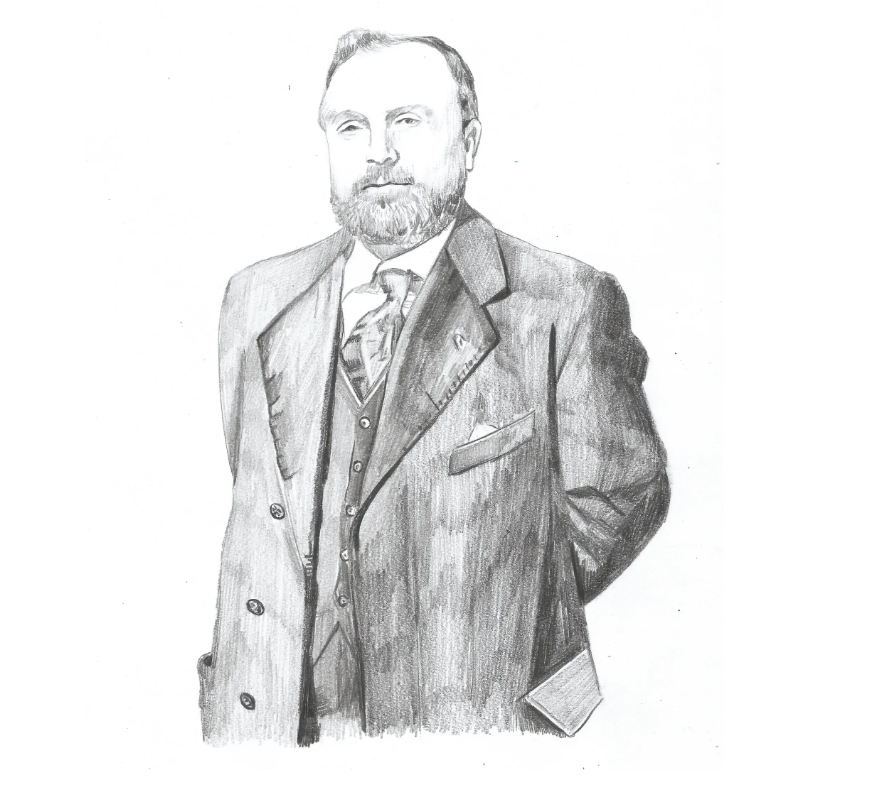
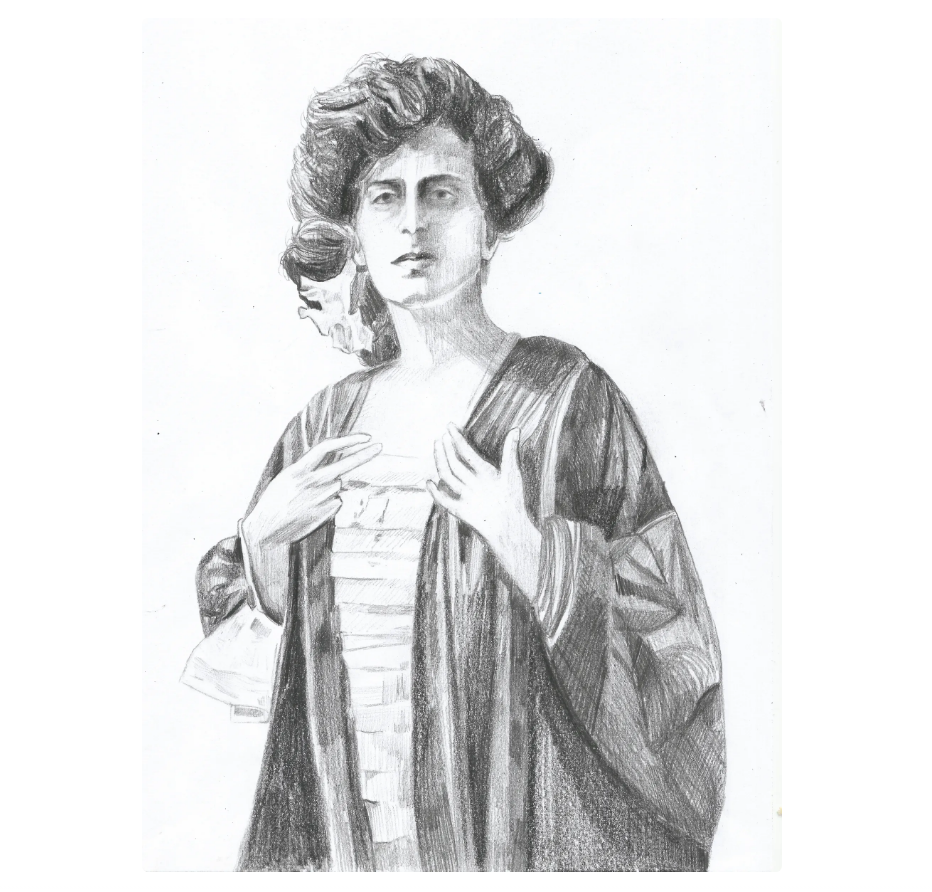
A Russian stage drama
In God Passes By, published in 1944 to mark the centenary of the Declaration of the Báb, Shoghi Effendi recorded for posterity another piece of theater:
A Russian poetess, member of the Philosophic, Oriental and Bibliological Societies of St. Petersburg, published in 1903 a drama entitled
The Báb,which a year later was played in one of the principal theatres of that city, was subsequently given publicity in London, was translated into French in Paris, and into German by the poet Fiedler, was presented again, soon after the Russian Revolution, in the Folk Theatre in Leningrad, and succeeded in arousing the genuine sympathy and interest of the renowned Tolstoy, whose eulogy of the poem was later published in the Russian press.32Shoghi Effendi, God Passes By (Wilmette: Bahá’í Publishing Trust, 1999), p. 56.
The drama was penned by Izabella Grinevskaia, who probably first encountered the story of the Báb while researching in a St. Petersburg academic library. Several Russian scholars—including Aleksander Kazembeg, Albert Dorn, Captain A. M. Tumansky and Baron Victor Rozen—had published articles about the Báb. Published in April 1903, Grinevskaia’s play, received favorable reviews in the press, some of which quoted from it at length. One noted that the story could move a Russian as well as a Persian. It is almost strange that in our literature no-one has come to write about such a wonderful, true-to-life tragedy.
33Jan Teofil Jasion, Táhirih on the Russian Stage, in Táhirih in History, p. 233. First seen in St. Petersburg on 4 January 1904, the work conveyed its message of peace, love, tolerance, and brotherhood so successfully that, after four performances, it was banned for five years by the Tsar’s censor. It was, however, performed in Baku on 28 April and Astrakhan during the first week of December 1904. A second edition was published in 1916 and staged the following year. In 1922 the last recorded staging took place in Ashgabat in Turkmenistan.
Among those who praised Grinevskaia’s play was Leo Tolstoy. A Russian journalist visiting the great author in 1903, described finding Tolstoy deeply immersed in reading the drama
and was charged by him to give his admiring appreciation to it author.
34Moojan Momen, The Bábí and Bahá’í Religions 1844–1944. p. 51. But Tolstoy’s curiosity about the Báb preceded his receiving Grinevskaia’s text. In April 1899, for example, the poet Rainer Maria Rilke paid a visit to Tolstoy with the Russian psychoanalyst Lou Andreas-Salomé and her husband, the orientalist Friedrich Carl Andreas, who had published a paper about the Bábís. Salomé later reported that Tolstoy paid little attention to her and Rilke, rather his interest was more focused on deep and invigorating discussions about the Bábí movement
with her husband.35Sasha Dehghani, Die ‘persische Jeanne d’Arc’: Zum Nachleben einer Märtyrerin,, Trajekte (Berlin) nr.15 (Oktober 2007).
In a letter to Grinevskaia, Tolstoy wrote, I have known of the Bábís for a long time and am much interested in their teachings. It seems to me that they have a great future … because they have thrown away the artificial superstructures which separate [the religions] from one another and are aiming at uniting all mankind in one religion …. And therefore, in that it educates men to brotherhood and equality and to the sacrificing of their sensual desires in God’s service, I sympathise with Bábism with all my heart.
36Moojan Momen, The Bábí and Bahá’í Religions 1844–1944. p. 55.
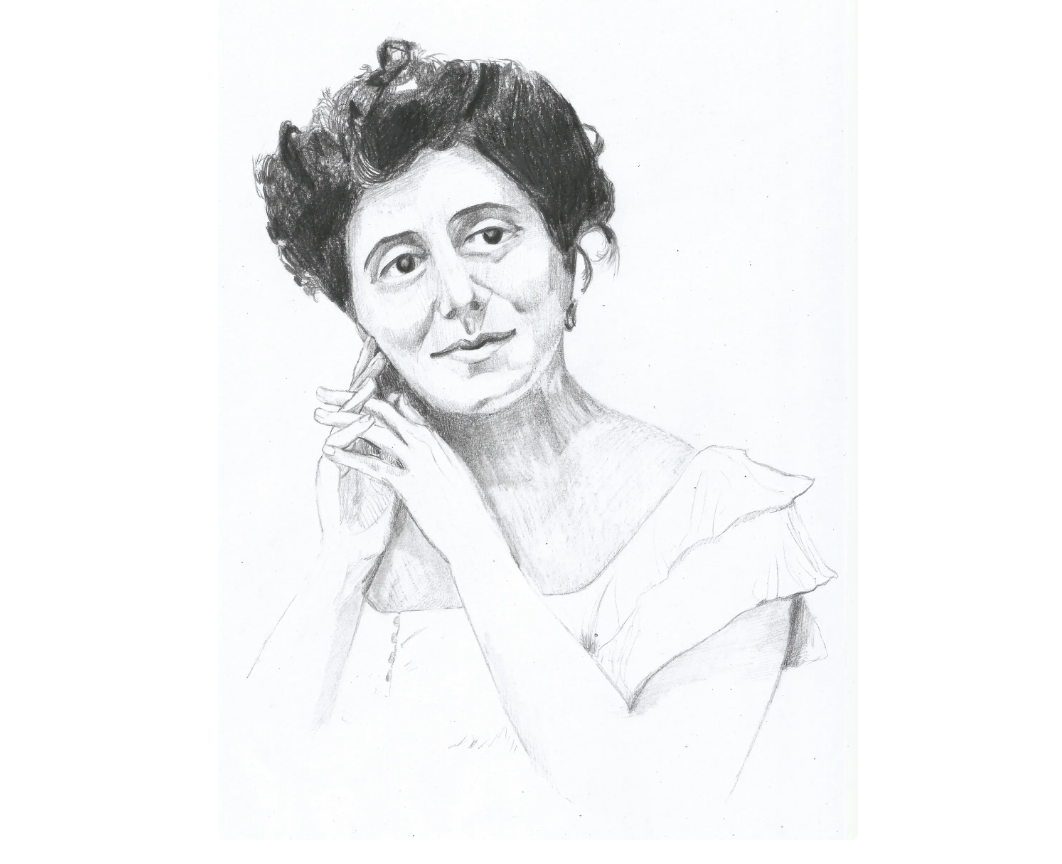
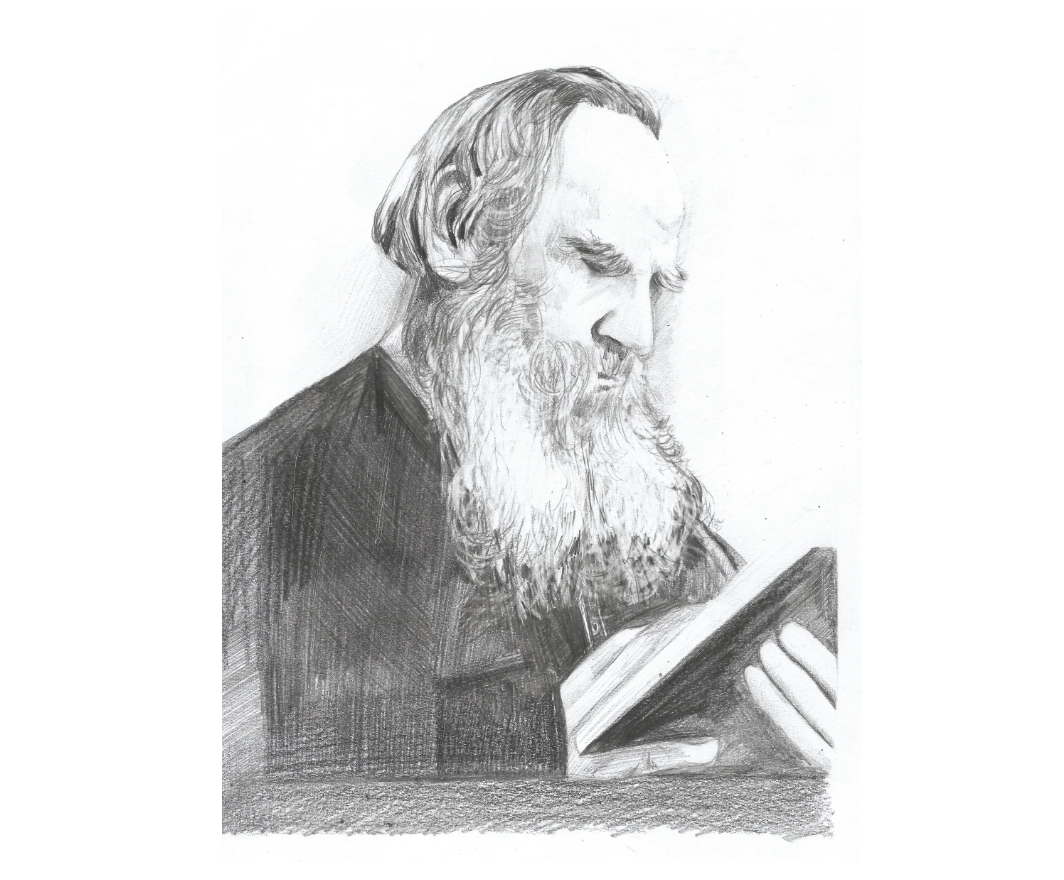
Response in the twentieth century
The Báb and His followers were thus a source of curiousity and inspiration to many writers, intrigued by His teachings and captivated by the heartbreak of their story. Later, as the Heroic Age
of Bahá’í history came to an end with the passing of ‘Abdu’l-Bahá in 1921, the Bahá’í Faith, under the direction of its Guardian, Shoghi Effendi, began to evolve into a distinct and independent, world-embracing religion, spreading to an ever-increasing number of territories. One of the reasons for Shoghi Effendi’s translation of The Dawn-Breakers: Nabíl’s Narrative of the Early Days of the Bahá’í Revelation was to give newer Bahá’ís in the West both a vivid introduction to the origins of their Faith, much of which was unknown to them, and an inspirational tool to encourage their own sacrificial services in the Faith’s progress. It was also the Guardian’s hope that The Dawn-Breakers would provide artists with source material for their work: It is surely true that the spirit of these heroic souls will stir many artists to produce their best. It is such lives that in the past inspired poets and moved the brush of the painters.
37Shoghi Effendi, cited in Extracts from the Bahá’í Writings on the Subject of the Importance of the Arts in Promoting the Faith, Compilation of Compilations Prepared by the Research Department of the Universal House of Justice, vol. 3 (Ingleside: Bahá’í Publications Australia, 2000), pp. 27–28.
In comparison to the outpouring of those early decades of literary responses to the Báb, general works inspired by the Bábí period may have dwindled for much of the 20th century. However, following the publication of The Dawn-Breakers up until today, Bahá’ís themselves have paid homage to the Báb and the heroes of Bábí history through countless works of art, poetry, theater, film, and music, in a wide range of languages and forms of cultural expression. Two American Bahá’ís who received widespread public acclaim in the pursuit of their art and deserve brief mention here, to exemplify how The Dawn-Breakers has impacted upon creative practitioners, are the painter Mark Tobey and the poet Robert Hayden.
When Tobey was on his second pilgrimage to the Holy Land in 1935, Shoghi Effendi told him that he was free to depict the early heroes of the Faith but not its Founders. Up until that time, some of the early western Bahá’ís who were painters had not attempted to illustrate any events from Bábí history, let alone attempt to convey more mystical concepts. Tobey, however, conversant with the moves toward abstraction in modernist European painting, found that his emerging visual language could be deployed not only for evoking historical events but also metaphysical ideas.
One of Tobey’s most explicit Bábí-inspired works is Movement Around a Martyr (1938). In it, he draws on his deep knowledge of renaissance art, especially the pietà figure of the martyred Christ, to depict the physical and spiritual forces that circle about a saintly figure who has been put to death. The entire image, which from a distance might be read as an all-seeing eye or maelstrom, spirals out of a small central circle, perhaps the Primal Point,
as the Báb described Himself, from which has been generated all created things.
38The Báb, Selections from the Writings of the Báb (Haifa: Bahá’í World Centre, 1982), p. 12. Swirling around the martyred figure, one lifeless arm hanging down, are mourners and worshippers, priests and helmeted guards, while more amorphous angelic figures circle above. In this work, Tobey draws an explicit parallel between the Bábí episode and the archetypal events from previous religious dispensations.
Meanwhile, in his poem, Dawnbreaker, the distinguished American poet Robert Hayden, who served from 1976 to 1978 as Consultant in Poetry to the U.S. Library of Congress, a role today known as U.S. Poet Laureate, takes as his inspiration the description of the humiliation of Hájí Sulaymán Khán, whose final punishment was to have holes gouged into his flesh into which were inserted burning candles:
Ablaze
with candles sconced
in weeping eyes
of wounds,He danced
through jeering streets
to death; oh sang
against. The drumming
mockery God’s praise.
Flames nested in
his fleshFed the
fires that consume
us now, the fire that
will save.39Robert Hayden, Angle of Ascent (New York: Liveright, 1966), p. 80.
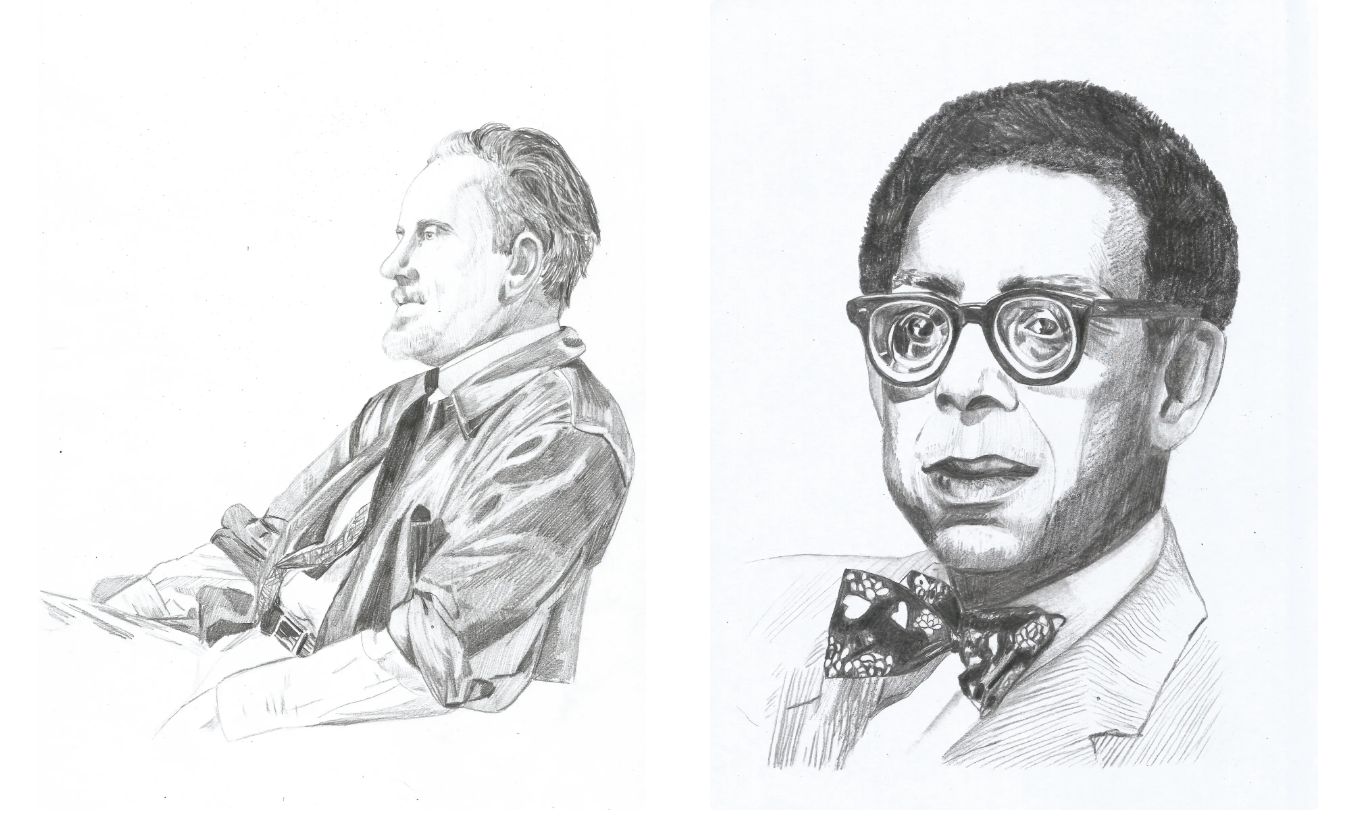
A continuing story
There are two aspects to the story of the Báb—His captivating personal demeanor and the harsh treatment of His followers—that particularly seem to have sparked the imagination of writers and then later, artists. The English divine Thomas K. Cheyne recorded that the Báb’s combination of mildness and power is so rare that we have to place him in a line with super-normal men ….
40Thomas K. Cheyne, The Reconciliation of Race and Religions (London: Adam and Charles Black, 1914), p. 74. Curzon noted, that [t]ales of magnificent heroism illumine the bloodstained pages of Bábí history …. Of no small account, then, must be the tenets of a creed that can awaken in its followers so rare and beautiful a spirit of self-sacrifice.
41George N. Curzon, Persia and the Persian Question (London: Frank Cass, repr. 1966), p. 501.
To this day, the Báb continues to fascinate not only Bahá’ís around the world, but scholars of history and religion, artists, musicians, writers and dramatists. Anticipating the worldwide celebrations of both the bicentenaries of Bahá’u’lláh in 2017 and the Báb in 2019, the Universal House of Justice wrote:
At the heart of these festivities must be a concerted effort to convey a sense of what it means for humanity that these two Luminaries rose successively above the horizon of the world. Of course, this will take different forms in different contexts, extending to a myriad artistic and cultural expressions, including songs, audio-visual presentations, publications and books.42Universal House of Justice, To all National Spiritual Assemblies, 18 May 2016 (Bahá’í World Centre, 2016, mimeographed), p. 1.
The bicentenary of the Birth of the Báb in October 2019 did indeed give rise to an outpouring of artistic expressions from people on every continent, a sure reminder of the profound influence that the life and mission of the Báb is continuing to have, and will increasingly exert, on artistic expression worldwide.
Much then is still to be seen and heard, drawn and painted, spoken and sung, acted upon the stage, or captured on film—as humanity increasingly responds to the advent of a Divine Revelation and its martyred Prophet-Herald, Who fascinated contemporary commentators in the middle of the nineteenth century, and Who continues to speak to hearts and minds in the twenty-first.
The Universe of Palomar
The largest telescope yet designed has been raised by scientists on a mountain under the clear California sky. Its lens, measuring sixteen feet eight inches in diameter, gathers light with so much more intensity than the human eye that its reflected image discloses an endless heaven hung with brilliant orbs. Its power is so encompassing that it extends human vision to bodies whose distance from the earth, measured by the time required for the travel of a ray of light, is not less than one billion years.
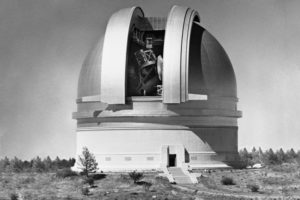
Since the speed of light is 186,000 miles a second, no terrestrial system of measurement can contain this utter remoteness or translate it into ordinary human meaning.
The universe of Palomar engulfs the small and familiar worlds sustained by the imagination of the poet, the shepherd and the mariner of ancient times. Its infinity of space and time can never be subjective to hope or fear. It is a motion we cannot stay, a direction we cannot divert, a peace we cannot impair, a power we cannot control. Here existence realizes the fulness of its purpose. The design and the material, the means and the end, the law and the subject, seem wholly one.
At Palomar the mind of man, standing on tiptoe, can behold the cosmic spectacle and grow by the eternal majesty it feeds on, but searching east or west or north or south one finds here no candle lighted to welcome the errant human heart.
“This nature,” the Bahá’í teachings observe, “is subjected to an absolute organization, to determined laws, to a complete order and a finished design, from which it will never depart; to such a degree, indeed, that if you look carefully and with keen sight, from the smallest invisible atom up to such large bodies of the world of existence as the globe of the sun or the other great stars and luminous spheres, whether you regard their arrangement, their composition, their form or their movement, you will find that all are in the highest degree of organization, and are under one law from which they will never depart.
“But when you look at nature itself, you see that it has no intelligence, no will … Thus it is clear that the natural movements of all things are compelled; there are no voluntary movements except those of animals, and above all, those of man. Man is able to deviate from and to oppose nature, because he discovers the constitution of things, and through this he commands the forces of nature; all the inventions he has made are due to his discovery of the constitution of things …
“Now, when you behold in existence such organizations, arrangements, and laws, can you say that all these are the effects of nature, though nature has neither intelligence nor perception? If not, it becomes evident that this nature, which has neither perception nor intelligence, is in the grasp of Almighty God Who is the Ruler of the world of nature; whatever He wishes He causes nature to manifest.”1‘Abdu’l-Bahá. Some Answered Questions. p.3.
Another passage states: “Know that every created thing is a sign of the revelation of God. Each, according to its capacity, is, and will ever remain, a token of the Almighty . . . So pervasive and general is this revelation that nothing whatsoever in the whole universe can be discovered that does not reflect His splendor . . . Were the Hand of Divine Power to divest of this high endowment all created things, the entire universe would become desolate and void.’’2Bahá’í World Faith. p.97.
The Bahá’í teachings also declare: “Earth and heaven cannot contain Me; what can alone contain Me is the heart of him that believes in Me, and is faithful to My Cause.”3Bahá’í World Faith. p.98.
Man’s Inner World
From man’s inner world of hope and fear the cry for help has never been raised so desperately nor so generally across the whole earth. Civilization is in conflict with the man of nature. Civilization betrays the man of understanding and feeling. The individual has become engulfed in struggles of competitive groups employing different weapons to attain irreconcilable ends. The beginning and the end of his actions lie concealed in the fiery smoke of furious, interminable debate. His personal world has been transformed into an invaded area he knows not how to defend.
Sickness of soul, like physical ailment, manifests itself in many forms. It need not be a localized pain nor an acute sense of shock and disability. An ailment can produce numbness as well as torment, or it can spare the victim’s general health but deprive him of sight, hearing or the use of a limb.
Soul sickness that goes deep into the psychic organism seldom finds relief in hysteria or other visible adjustments to ill-being. It expresses itself in successive re-orientations to self and to society, each of which results in a conviction representing a definite choice or selection between several possibilities. When the conviction hardens, all possibilities but one are denied and dismissed. If individuals come to realize that effort to express certain qualities through their daily lives is continuously unsuccessful, they will, in the majority of cases, abandon the exercise of that quality and concentrate on others. If individuals find that their civilization makes demands on them for the exercise of qualities they personally condemn, in most cases the necessary adjustment is made.
The modern individual is in the same position as the mountain climber bound to other climbers by a rope. At all times he is compelled to choose between freedom and protection—to balance his rights and his loyalties, and compromise between his duty to protect others and his duty to develop something unique and important in himself. As long as the route and the goal are equally vital to all the climbers, the necessary adjustments can be made without undue strain. But modern life binds together in economic, political and other arrangements groups of people who never entered into a pact of mutual agreement, who inwardly desire and need diverse things. The rope that binds them is a tradition, a convention, an inherited obligation no longer having power to fulfill.
Here, in essence, is the tragic sickness of modern man. What he sows he cannot reap. What he reaps he cannot store until a new harvest ripens. He feeds on another’s desire, he wills to accomplish an alien task, he works to destroy the substance of his dearest hope. Moral standards stop at the frontier of the organized group. Partisan pressures darken the heavens of understanding.
Humanity is undergoing a complete transformation of values. The individual is being transplanted from his customary, sheltered traditional way of life to the vast and disruptive confusions of a world in torment. The institutions which have afforded him social or psychic well-being are themselves subject to the same universal dislocation. The label no longer identifies the quality or purpose of the organization. One cannot retreat into the isolation of primitive simplicity; one cannot advance without becoming part of a movement of destiny which no one can control nor define.
Where can a new and creative way of life be found? How can men attain knowledge of the means to justify their legitimate hope, fulfill their normal emotions, satisfy their intelligence, unify their aims and civilize their activities? The astronomer has his polished lens of Palomar to reveal the mysteries of the physical universe. Where can mankind turn to behold the will and purpose of God?
Conscience: The Mirror Hung in a Darkened Room
Many persons feel that in man there is a power of conscience that will unfailingly, like the compass needle, point to the right goal. If in any individual case, this conception believes, the power of conscience fails to operate, it is because the human being himself has betrayed his own divine endowment. He has heard the voice but refused to heed. He has seen the right course of action but preferred to take the evil path.
If we examine this contention as applied to ourselves and others familiar to us over a considerable period of time, we find that conscience, as a faculty, cannot be understood by reference to any such naive and conventional view.
The individual has no private wire to God. The dictates or impulses we call conscience indicate different courses of action at different times. The truth, the law, the appropriate principle or the perfect expression of love is not when wanted conveyed to our minds like a photograph printed from a negative developed in the subconscious self. No individual can afford to rely for guidance in all vital affairs on the testimony offered from within.
Individual conscience appears to be compounded of many ingredients at this stage of mass development: childhood training, personal aptitude, social convention, religious tradition, economic pressure, public opinion and group policy.
It is when we examine individual conscience in the area of social action and public responsibility that its limitations become clear. Public policy is the graveyard in which the claim to perfect personal guidance lies interred. In every competitive situation involving social groups, conscientious persons are found on both sides of the struggle. The conscience of one leads to a definition of value or a course of action which stultifies the other. Conscientious persons in the same group seldom agree on matters affecting the whole group. Individual conscience retreats to the realm of the private person when it cannot share or alter the conscience and conviction of others.
The result is that while theoretical exaltation of conscience is seldom abandoned, the operation of conscience, outside the small area controlled by personal will, is continuously suppressed. Policy is the conscience of the group, and dominant groups sanction collective actions frequently abhorrent to the individual. Our dominant groups are the successors to the primitive tribes in which the individual was once completely submerged. Like the primitive tribe, their basic policy is to survive.
So helpless has the individual become under pressure of world-shaking events that leaders of revolution dismiss his moral worth entirely from their considerations. The individual ceases to be a person. He is made subject to mass regulation under penalty of punishment for disobedience and, if obedient, under hope of his share of a mass award. Societies have arisen composed of this unmoral mass of human beings, the nature of which resembles the physical monsters terrorizing the earth aeons ago.
Between the naive spiritual conception of conscience as divine spark, and the naive rational view that conscience is automatic response to external stimuli, the actual truth undoubtedly lies.
Human conscience is a quality existing in different stages of development. In the child it makes for obedience to the power by which the child is protected. It can manifest as an expression of the instinct of self-survival or self-development. It can inspire loyalty to the group. It can subject the individual to complete sacrifice for the sake of his group or for the truth he most reveres.
Moral attitudes become established through social education and discipline conducted over long periods of time. The moral worth of the individual consists in his capacity to share in a process of endless evolution. Though at times he seems bogged down in the swamp of evil, the ladder of development stands close to his hand and he can ascend it rung by rung. His moral responsibility can never be disclaimed by him nor voided by others on his behalf, since the principle of cause and effect operates throughout all life. No man and no society exists in a universe shaped to the pattern of human desire.
Conscience is not a form of wisdom or knowledge. It cannot be dissociated from the development of the individual or from the condition of his society. But one may say that conscience is a mirror hung in a room. If the room is darkened the mirror reflects but dimly. Light is needed—the light of truth and love. Then will the mirror of spiritual awareness disclose to the individual the essential nature of his own problem of choice, and open for him the door that leads from the private person to mankind. The helplessness of the individual today is due to the absence of light.
“When man allows the spirit, through his soul, to enlighten his understanding, then does he contain all creation; because man, being the culmination of all that went before and thus superior to all previous evolutions, contains all the lower world within himself. Illuminated by the spirit through the instrumentality of the soul, man’s radiant intelligence makes him the crowning-point of creation.
“But on the other hand when man does not open his mind and heart to the blessing of the spirit, but turns his soul towards the material side, towards the bodily part of his nature, then is he fallen from his high place and he becomes inferior to the inhabitants of the lower animal kingdom. In this case the man is in a sorry plight! For if the spiritual qualities of the soul, open to the breath of the Divine Spirit, are never used, they become atrophied, enfeebled, and at last incapacitated; while the soul’s material qualities alone being exercised, they become terribly powerful, and the unhappy, misguided man becomes more savage, more unjust, more vile, more cruel, more malevolent than the lower animals themselves.
“If, on the contrary, the spiritual nature of the soul has been so strengthened that it holds the material side in subjection, then does the man approach the divine; his humanity becomes so glorified that the virtues of the celestial assembly are manifest in him; he radiates the mercy of God, he stimulates the spiritual progress of mankind, for he becomes a lamp to show light on their path.”4Compiled by Horace Holley. The Reality of Man. p.6.
In such words the Bahá’í teachings describe the two paths which open before each human being, choice of which he himself is free to make.
Sectarianism—From Creation to Chaos
If individual conscience cannot illumine from man’s inner world the nature of basic social problems, what of religion? Have the traditional faiths such command of spiritual truth that they can serve as the guide and conscience of mankind? Do these sects and denominations constitute the moral Palomar bestowing vision upon a divided, a desperate humanity? Has God spoken to our age from these minarets, these temples, mosques, chapels and churches which represent the meaning and purpose of religion to the masses in East and West?
The world of sectarian religion is not a universe, ordered by one central creative will, but the fragments of a world which no human authority has power to restore. There are the main bodies of ancient, revealed religion: Hinduism, Buddhism, Zoroastrianism, Judaism, Muhammadanism and Christianity, standing apart like continents separated by the salt, unplumbed sea. There are in each of these bodies a large number of independent, mutually exclusive subdivisions. Their diverse claims to organic sovereignty maintain in the realm of faith the same condition which exists among nations, principalities, kingdoms and empires. They deal with one another by treaty and truce; there are conquests and seizures, colonies and alliances, plans and strategies, wars and revolutions, all without control of the greater and vital movements of society or even foreknowledge of what was and is to come.
This is why mankind has suffered two world wars, social dislocation and a plague of immorality, faithlessness, materialism and discontent. No universal religious body has existed to stay the swift descent of our age into the gloom of savage strife. Events do not wait upon doctrinal readjustments. When peace does not exist in the world of the soul it cannot exist in any other realm of human intercourse and experience. The masses have been given no moral unity, no common purpose which, stamped with divine authority, could raise them above the fatal disunities and conflicts distilled by their economic and political institutions.
Yet each of these faiths was divinely revealed, imbued with a universal spirit, charged with a high creative mission, and established itself through the sacrifice and heroism of those early believers who beheld the Word of God. Each faith has reconsecrated human life and by its lifeblood nourished great progress in civilization. What has happened to the first, true vision? What has extinguished the flame upon the altar of worship?
The superhuman character of revelation has gradually undergone dilution and admixture. The human explanation of a truth has been substituted for the truth itself. The performance of ceremonial rites has come to occupy the place held by the mystery of spiritual rebirth. Obligation to a professionalized institution has weakened the duty laid upon individuals to serve society and mankind. The aim of a regenerated, righteous, peaceful civilization inspired by the founders of religion has become diverted into hope for the victory of the church. Sectarianism in essence is not freedom of religion. It is an opportunity to abandon the way of life revealed from on high and substitute belief for sacrifice, ritual for virtue, creed for understanding, and a group interest for the basic rights of mankind.
All things exist in a process of life and death, growth and development, extinction and renewal. The fact that what men devise as a counterfeit for truth is eventually destroyed, does not confirm the rejection of religion by the cynic or the materialist. On the contrary, the succession of faiths throughout the period of known history points to a complete vindication of faith in God, since He divides truth from error, the spirit from the letter. He punishes and He rewards. For every death He sends a new life.
“O army of life!” the Bahá’í teachings warn, “East and West have joined to worship stars of faded splendor and have turned in prayer unto darkened horizons. Both have utterly neglected the broad foundation of God’s sacred laws, and have grown unmindful of the merits and virtues of His religion. They have regarded certain customs and conventions as the immutable basis of the Divine Faith, and have firmly established themselves therein. They have imagined themselves as having attained the glorious pinnacle of achievement and prosperity when, in reality, they have touched the innermost depths of heedlessness and deprived themselves wholly of God’s bountiful gifts.
“The cornerstone of the Religion of God is the acquisition of the Divine perfections and the sharing in His manifold bestowals. The essential purpose of faith and belief is to ennoble the inner being of man with the outpourings of grace from on high. If this be not attained, it is indeed deprivation itself. It is the torment of infernal fire.”5‘Abdu’l-Bahá. Selected Writings of ‘Abdu’l-Bahá. p.43.
And even more definitely: “Superstitions have obscured the fundamental reality, the world is darkened and the light of religion is not apparent. This darkness is conducive to differences and dissensions; rites and dogmas are many and various; therefore discord has arisen among the religious systems whereas religion is for the unification of mankind. True religion is the source of love and agreement amongst men, the cause of the development of praiseworthy qualities; but the people are holding to the counterfeit and imitation, negligent of the reality which unifies, so they are bereft and deprived of the radiance of religion.”6Bahá’í World Faith. p.237.
“When the lights of religion become darkened the materialists appear. They are the bats of night. The decline of religion is their time of activity; they seek the shadows when the world is darkened and the clouds have spread over it.”7Bahá’í World Faith. p.238.
“If the edifice of religion shakes and totters, commotion and chaos will ensue and the order of things will be utterly upset.”8Bahá’í World Faith. p.289.
“Religious fanaticism and hatred,” the Bahá’í teachings affirm, “are a world-devouring fire, whose violence none can quench. The Hand of Divine Power can alone deliver mankind from this desolating affliction.”9Bahá’u’lláh. Gleanings from the Writings of Bahá’u’lláh. p.288.
Internationalism: The End of an Era
When changes take place in the spiritual life of a people, they produce effects not only upon the realm of personal conscience or upon the definitions of denominational faith—their results flow forth throughout the civilization. Society, indeed, is the outer surface of human action, as religion is the inner surface. The persons who are impressed with certain values from the religious teaching of their childhood, strive to fulfill them as adults in their civilization. The nations of the world are not composed of a separate race of human beings called citizens or subjects; all this mass of humanity who serve as citizens or subjects are at the same time members of different racial groups and members of different religious bodies.
Since religious training has for the most part been based upon pre-rational states of childhood, the vital assumptions of faith or theology continue from generation to generation without analysis or investigation. The child assumes that his religion sets him off in some mysterious but inevitable and justifiable manner from those people who belong to a different religion. This pre-rational experience becomes an imperative directing his activities in other fields, all the more effective because it works behind his conscious and rational thought. Religion has thus prepared the way for the spirit of exclusive nationalism, class competition and other self-centered types of social institution. The pre-rational experience of justifiable division matures in the irrational attitudes of partisan loyalty which set people off from one another in political and economic matters, eventuating in strife and ruin.
The modern nation represents the most powerful and effective social unity ever achieved. It has coordinated the human qualities and possibilities to an unprecedented degree, liberating people from servitude to nature and laying the foundations of orderly progress by reconciling the political claims of the state with the social and cultural needs of the individual. But like every human institution, the nation cannot become an end unto itself. It cannot draw arbitrary lines and decree that human evolution must stop short at this line or that. The nation cannot reduce all questions of human relations to political principle, and solve them by a formal relationship to the state.
The movement of life is irresistible. When the modern nation had organized its area and completed the creation of the necessary institutions, it became mature and incurred obligation to establish useful relationships with other nations. The nation became more and more involved in activities and affairs outside its boundaries and beyond its jurisdiction. Internationalism has been the principle of civilization for more than a hundred years, but the nations could not realize themselves as means to an end, as instruments called upon, for the sake of humanity, to create a sovereignty of and for the entire world. This moral resolution has been lacking.
Denied fulfilment in world order, modern internationalism has organized the nations for their own destruction. The social organism made an end unto itself becomes self-consuming. First there has been an interval of spiritual blindness, a miscalculation of the essential nature of human life; then a denial of the obligation to join with other nations for the sake of peace, then a denunciation of some threatening foe, and, finally, a plunge into the maelstrom where every trend toward world unity is accelerated faster than the public intelligence can comprehend.
Power to make permanent and workable decisions has been temporarily lost. Our international relations rest upon formal agreements which have not yet become translated into world relationships and hence remain subject to abrupt dissolution if the strains of social dislocation go to the breaking point. In this condition of crisis humanity stands, unable to return to the simpler societies of the past and unable to generate sufficient power for true unity in a world civilization. The races and peoples meet in a fateful encounter, each cherishing its separateness as a duty and a right. One may say that humanity does not yet exist, for men are not directed by a world consciousness or impelled by a mutual faith.
“Today the world of humanity,” the Bahá’í teachings stated a generation ago, “is in need of international unity and conciliation. To establish these great fundamental principles a propelling power is needed. It is self-evident that unity of the human world and the Most Great Peace cannot be accomplished through material means. They cannot be established through political power, for the political interests of nations are various and the policies of peoples are divergent and conflicting. They cannot be founded through racial or patriotic power, for these are human powers, selfish and weak. The very nature of racial differences and patriotic prejudices prevents the realization of this unity and agreement. Therefore it is evidenced that the promotion of the oneness of the kingdom of humanity, which is the essence of the teachings of all the Manifestations of God, is impossible except through the divine power and the breaths of the Holy Spirit. Other powers are too weak and are incapable of accomplishing this.”10‘Abdu’l-Bahá. Selected Writings of ‘Abdu’l-Bahá. p.5.
“Among the teachings … is man’s freedom, that through the ideal Power he should be free and emancipated from the captivity of the world of nature; for as long as man is captive to nature he is a ferocious animal, as the struggle for existence is one of the exigencies of the world of nature. This matter of the struggle for existence is the fountainhead of all calamities and is the supreme affliction.”11Bahá’í World Faith. p.288.
“Universal peace is a matter of great importance, but unity of conscience is essential, so that the foundation of this matter may became secure, its establishment firm and its edifice strong.”12Bahá’í World Faith. p.285.
In the Bahá’í writings, peace is revered because in essence it is a spiritual mystery in which humanity has been invited in our day, for the first time, to partake. Peace is a divine creation; a reconciliation of human and divine purpose. Peace appears first as a universal religion; as its influence gathers force and its principles spread then peace can permeate the body of society, redeeming its institutions and its activities and consecrating its aims.
“Universal peace,” these writings promise, “is assured … as a fundamental accomplishment of the religion of God; that peace shall prevail among nations, governments and peoples, among religions, races and all conditions of mankind. This is one of the special characteristics of the Word of God revealed in this Manifestation.”13Bahá’í World Faith. p.247.
Spiritual Education—The Instrument of Peace
The issues of human existence turn upon the axis of education. Education alone can overcome the inertia of our separateness, transmute our creative energies for the realization of world unity, free the mind from its servitude to the past and reshape civilization to be the guardian of our spiritual and physical resources.
The true purposes of education are not fulfilled by the knowledge conferred through civil education, since this knowledge ends with the purposes of the individual or the needs of the state. They are not fulfilled by sectarian education, since sectarian knowledge excludes the basic principle of the continuity and progressiveness of revelation. The true purposes of education are not achieved by independent pursuit of knowledge undertaken through study of the classics, the great philosophies or even the religious systems of the past. Such education enhances the individual capacity and deepens the insight of a group. It opens the door to a world of superior minds and heroic accomplishment. But that world is the reflection of the light of truth upon past conditions and events. It is not the rising of the sun to illumine our own time, inspire a unified world movement, and regenerate withered souls.
But that world is the reflection of the light of truth upon past conditions and events. It is not the rising of the sun to illumine our own time, inspire a unified world movement, and regenerate withered souls.
Nor may we hope that psychology can develop the necessary transforming power for a dislocated society, a scientific substitute for the primitive offices of religion. The explorer in the world of the psyche sees the projection of his own shadow, finds the answer determined by his own question. He can prove mechanistic determinism or demonstrate the freedom and responsibility of the soul. The area within which he works is suitable for the development of personal healing. He can learn the habitual reactions of persons in a group or of groups in a society, but this knowledge is statistical until applied by a comprehensive organ of intelligence on a world scale.
“The human spirit which distinguishes man from the animal,” the Bahá’í teachings state, “is the rational soul; and these two names—the human spirit and the rational soul—designate one thing. This spirit, which in the terminology of the philosophers is the rational soul, embraces all beings, and as far as human ability permits discovers the realities of things and becomes cognizant of their peculiarities and effects, and of the qualities and properties of beings. But the human spirit, unless assisted by the spirit of faith, does not become acquainted with the divine secrets and the heavenly realities. It is like a mirror which, although clear, polished and brilliant, is still in need of light. Until a ray of the sun reflects upon it, it cannot discover the heavenly secrets.”
This significant comment is also found: “With the love of God all sciences are accepted and beloved, but without it, are fruitless; nay, rather, the cause of insanity. Every science is like unto a tree; if the fruit of it is the love of God, that is a blessed tree. Otherwise it is dried wood and finally a food for fire.”
A new and universal concept of education is found in the literature of the Bahá’í Faith.
“When we consider existence, we see that the mineral, vegetable, animal and human worlds are all in need of an educator.
“If the earth is not cultivated it becomes a jungle where useless weeds grow; but if a cultivator comes and tills the ground, it produces crops which nourish living creatures. It is evident, therefore, that the soil needs the cultivation of the farmer …
“The same is true with respect to animals: notice that when the animal is trained it becomes domestic, and also that man, if he is left without training becomes bestial, and, moreover, if left under the rule of nature, becomes lower than an animal, whereas if he is educated he becomes an angel. …
“Now reflect that it is education that brings the East and the West under the authority of man; it is education that produces wonderful industries; it is education that spreads glorious sciences and arts; it is education that makes manifest new discoveries and laws. If there were no educator there would be no such things as comforts, civilization, facilities, or humanity. …
“But education is of three kinds: material, human and spiritual. Material education is concerned with the progress and development of the body, through gaining its sustenance, its material comfort and ease. This education is common to animals and man.
“Human education signifies civilization and progress: that is to say, government, administration, charitable works, trades, arts and handicrafts, sciences, great inventions and discoveries of physical laws, which are the activities essential to man as distinguished from the animal.
“Divine education is that of the Kingdom of God: it consists in acquiring divine perfections, and this is true education; for in this estate man becomes the center of divine appearance, the manifestation of the words, ‘Let us make man in our image and after our likeness.’ This is the supreme goal of the world of humanity.
“Now we need an educator who will be at the same time a material, human and spiritual educator, and whose authority will be effective in all conditions . . .
“It is clear that human power is not able to fill such a great office, and that the reason alone could not undertake the responsibility of so great a mission. How can one solitary person without help and without support lay the foundations of such a noble construction? He must depend on the help of the spiritual and divine power to be able to undertake this mission. One Holy Soul gives life to the world of humanity, changes the aspect of the terrestrial globe, causes intelligence to progress, vivifies souls, lays the foundation of a new existence, establishes the basis of a marvelous creation, organizes the world, brings nations and religions under the shadow of one standard, delivers man from the world of imperfections and vices, and inspires him with the desire and need of natural and acquired perfections. Certainly nothing short of a divine power could accomplish so great a work.’’14‘Abdu’l-Bahá. Some Answered Questions. p.8.
Who is this educator? “The holy Manifestations of God, the divine prophets, are the first teachers of the human race. They are universal educators and the fundamental principles they have laid down are the causes and factors of the advancement of nations. Forms and imitations which creep in afterward are not conducive to that progress. On the contrary these are destroyers of the human foundations laid by the heavenly educators.’’15Bahá’í World Faith. p.250.
“Religion is the outer expression of the divine reality. Therefore it must be living, vitalized, moving and progressive. If it be without motion and non-progressive it is without the divine life; it is dead. The divine institutes are continuously active and evolutionary; therefore, the revelation of them must be progressive and continuous.”16Bahá’í World Faith. p.224.
The Manifestation of God
The focal point of the Bahá’í teachings is clarification of man’s relationship to God. As long as peoples differ, or are unaware, or accept a substitute for this relationship, we cannot distinguish between truth and error, or discriminate between principle and superstition. Until we apprehend human beings in the light of the creative purpose, it is impossible to know ourselves or others. Social truth is merely experiment and hypothesis unless it forms part of a spiritual reality.
The founders of revealed religions, who have been termed prophets, messengers, messiahs and saviours, in the Bahá’í teachings are designated Manifestations of God. These beings, walking on earth as men, stand in a higher order of creation and are endowed with powers and attributes human beings do not possess. In the world of truth they shine like the sun, and the rays emanating from that sun are the light and the life of the souls of men.
The Manifestation is not God. The Infinite cannot be incarnated. God reveals His will through the Manifestation, and apart from what is thus manifested His will and reality remain forever unknown. The physical universe does not reveal the divine purpose for man.
“Every one of them,” the Bahá’í teachings state, “is the Way of God that connects this world with the realms above, and the standard of His truth, unto every one in the kingdoms of earth and heaven. They are the Manifestations of God amidst men, the evidences of His truth, and the signs of His glory.”17Bahá’í World Faith. p.21.
What almighty power is exercised by a will manifested through a person who has been flouted, denied, imprisoned, tortured and crucified? No human authority could survive such savage onslaughts as have greeted each messenger who has come from the heavenly realm to this lowest of worlds. The divine power expresses itself by compulsion in the kingdoms of nature. In the kingdom of man the divine power operates in such a manner that men are free to accept and adore, or repudiate and condemn. The divine power compels that from age to age men must come to a decision, but the decision itself is free. By that decision, when the prophet has revealed the will of God, men separate into two organic companies: those who believe and those who deny.
The whole pattern and process of history rests upon the succession of dispensations by which man’s innate capacities are developed and by which the course of social evolution is sustained. The rise and fall of civilizations proceed as the effect of prior spiritual causation. An ancient civilization undergoes moral decadence; by division of its own people and attack from without its power and authority are destroyed; and with that destruction collapses the culture and the religious system which had become parasites upon its material wealth. Concurrently, a new creative spirit reveals itself in the rise of a greater and better type of society from the ruins of the old.
The critical point in this process is the heroic sacrifice offered the Prophet by those who see in Him the way to God, and His official condemnation by the heads of the prevailing religious system. That condemnation, because men cannot judge God, recoils back upon the religion and the civilization itself. They have condemned themselves. In the same manner, the small and weak minority who have seen the Face of God in His Manifestation grow from strength to strength. The future is with them. In their spiritual fellowship the seeds of the new civilization are watered and its first, tender growth safeguarded by their heart’s blood.
Through the Manifestation of God the power of the Holy Spirit accomplishes the will of God. Nothing can withstand that power. Because its work is not instantaneous, a darkened age cannot perceive the awful process of cause and effect—the divine will as cause, and human history as effect—guiding human destiny from age to age.
But the Bahá’í teachings penetrate farther into the mystery when they affirm that in spirit and in aim the successive prophets are one being, one authority, one will. This teaching on the oneness of the Manifestations of God is the essential characteristic of a revelation which represents religion for the cycle of man’s maturity and the creation of world peace.
“There can be no doubt whatever that the peoples of the world, of whatever race or religion, derive their inspiration from one heavenly Source and are the subjects of one God. The difference between the ordinances under which they abide should be attributed to the varying requirements of the age in which they were revealed.”18Bahá’u’lláh. Gleanings from the Writings of Bahá’u’lláh. p.217.
Those who deny and condemn the Prophet, therefore, are not defending the divine purpose from sinister betrayal by one who introduces new laws and principles; on the contrary, since the Manifestation in Himself is one, they condemn their own Prophet when He returns to regenerate the world and advance the true Faith of God. Thus is the moral nature of human life, and man’s responsibility to God, sustained throughout the devious course of history. Faith is no mere belief, but a connection with the only power that confers immortality on the soul and saves humanity as a whole from complete self-destruction.
“A man who has not had a spiritual education,” the Bahá’í writings attest, “is a brute.”19‘Abdu’l-Bahá. Some Answered Questions. p.135. “We have decreed, O people, that the highest and last end of all learning be the recognition of Him Who is the Object of all knowledge; and yet behold how ye have allowed your learning to shut you out, as by a veil, from Him Who is the Dayspring of this Light, through Whom every hidden thing hath been revealed.”20Bahá’u’lláh. Epistle to the Son of the Wolf. p.129.
The oneness of the Manifestations has been thus established in the Bahá’í writings: “In the Word of God there is … unity, the oneness of the Manifestations of God, His Holiness Abraham, Moses, Jesus Christ, Muhammad, the Báb and Bahá’u’lláh. This is a unity divine, heavenly, radiant, merciful; the one reality appearing in successive manifestations. For instance, the sun is one and the same but its points of dawning are various. During the summer season it rises from the northern point of the ecliptic; in winter it appears from the southern point of rising. Although these dawning points are different, the sun is the same sun which has appeared from them all. The significance is the reality of prophethood which is symbolized by the sun, and the holy Manifestations are the dawning-places or zodiacal points.”21Bahá’í World Faith. p.259.
The coming of the Manifestation in this age signalizes the termination of a long epoch in human history, the prophetic era in which mankind was gradually prepared for the promised day of universal peace. In Bahá’u’lláh the spirit of faith is renewed and given expression in teachings which affirm the organic unity of the whole human race. Nothing sacred and valid revealed in former dispensations is denied, but the spirit of faith has been endowed with a worldwide and universal meaning.
The Bahá’í teachings overcome prejudices of race, nation and sect by inspiring sentiment of brotherhood. They create not only a pure well of feeling but constitute also a unified body of knowledge in which the power of reason can be fulfilled. They connect social truth with the truth of worship, and broaden the field of ethics to include right relationships of races as well as individual persons. They formulate law and principle which will bring order into international affairs. “In this present age the world of humanity,’’ the teachings declared before the first World War (anticipating the conditions of today) “is afflicted with severe sicknesses and grave disorders which threaten death. Therefore His Holiness Bahá’u’lláh has appeared. He is the real physician bringing divine remedy and healing to the world of man.”22‘Abdu’l-Bahá. Selected Writings of ‘Abdu’l-Bahá. p.12.
“The first teaching of Bahá’u’lláh is the investigation of reality. Man must seek the reality himself, forsaking imitations and adherence to mere hereditary forms. As the nations of the world are following imitations in lieu of truth and as imitations are many and various, differences of belief have been productive of strife and warfare. So long as these imitations remain the oneness of the world of humanity is impossible. Therefore we must investigate the reality in order that by its light the clouds and darkness may be dispelled. If the nations of the world investigate reality they will agree and become united.”23Bahá’í World Faith. p.238.
“The source of all learning is the knowledge of God, exalted be His glory, and this cannot be attained save through the knowledge of His divine Manifestation.”24Bahá’í World Faith. p.140. This knowledge offers to men the substance of the education needed for the establishment of a society worthy of the blessings of justice and peace.